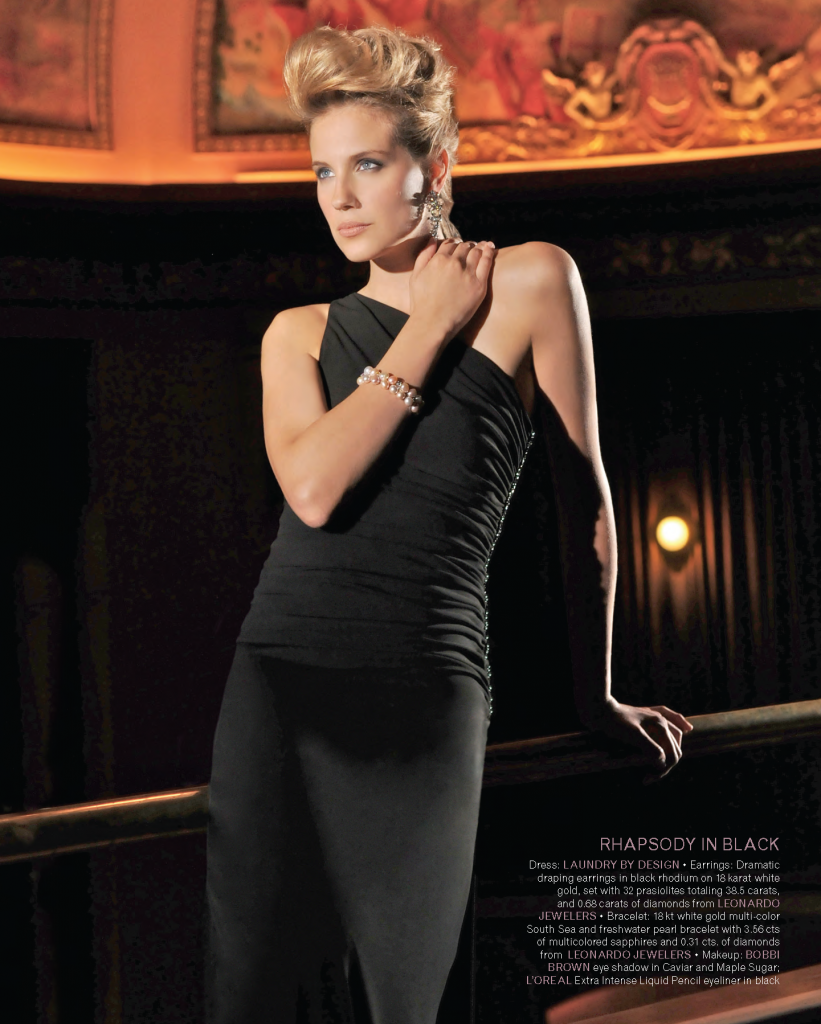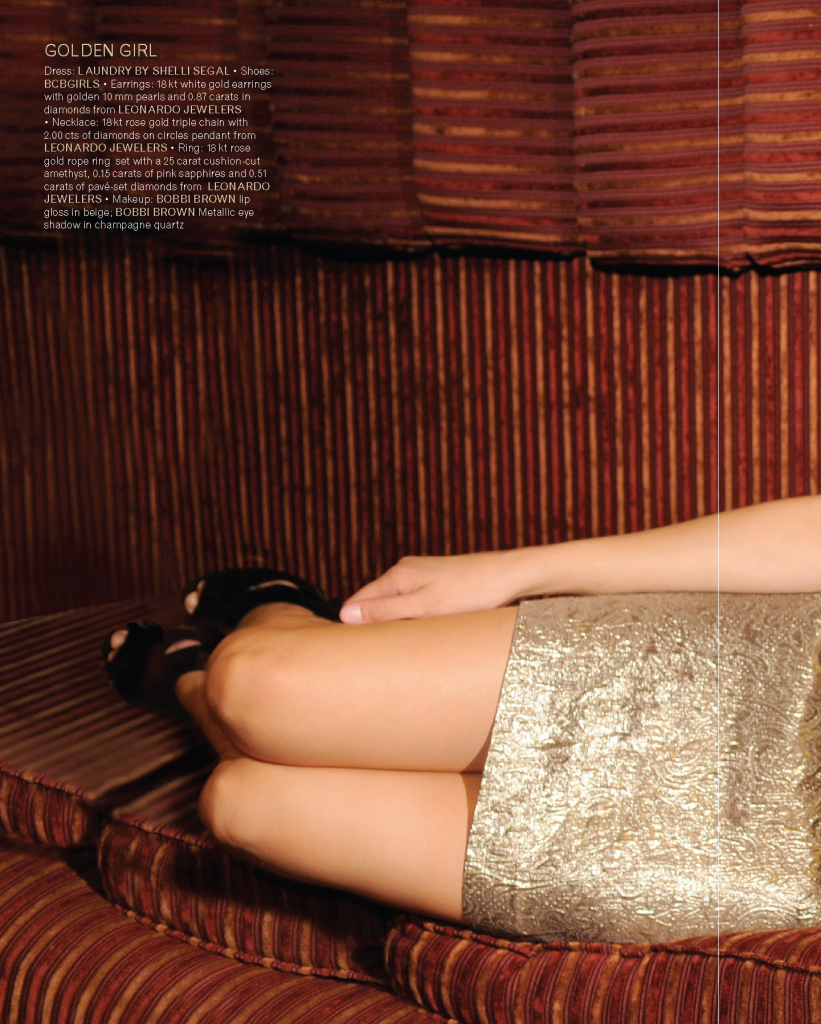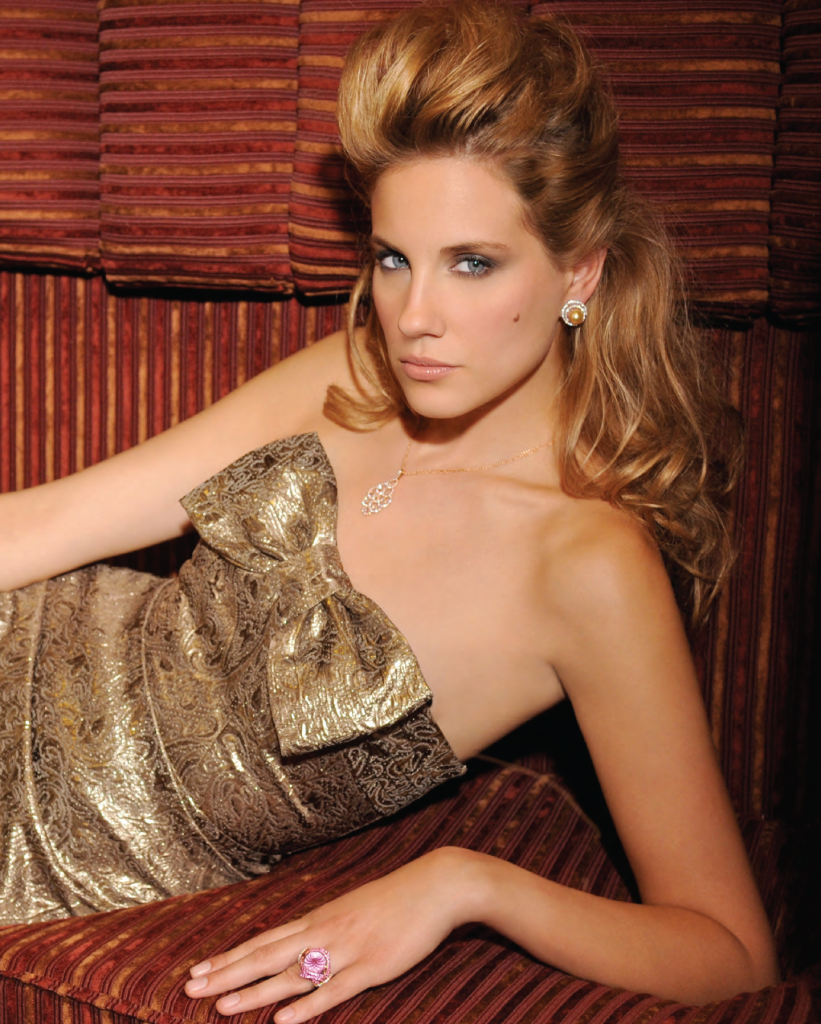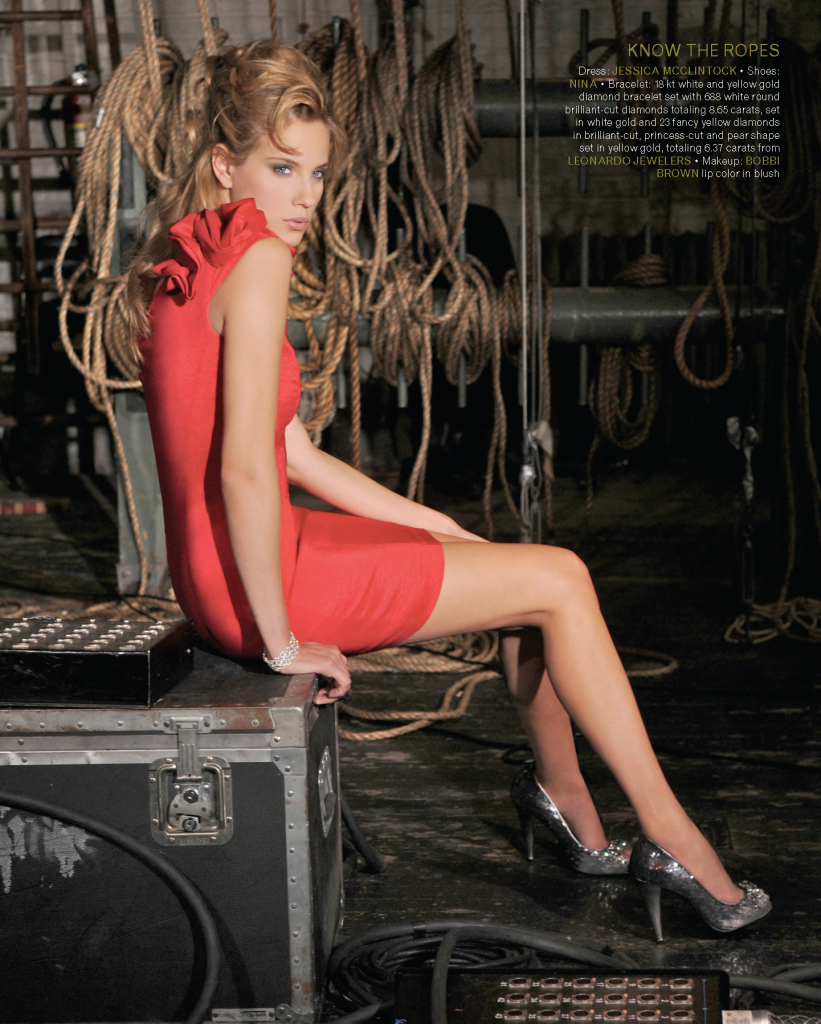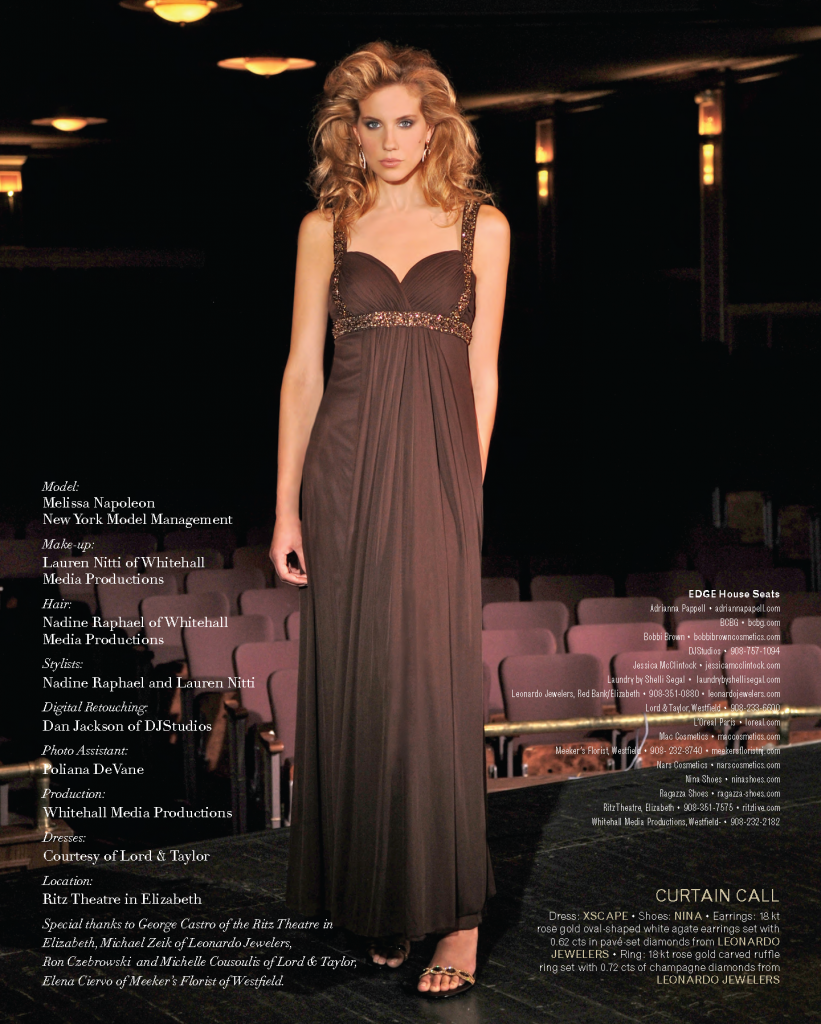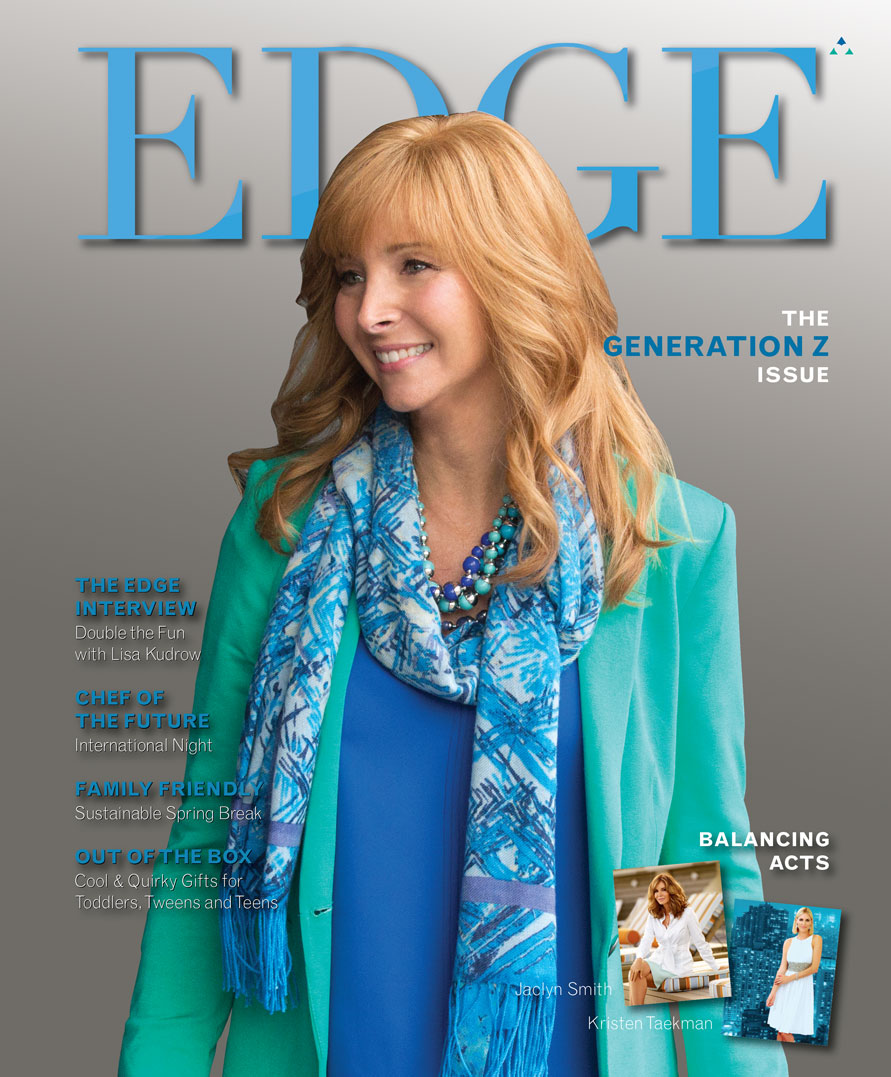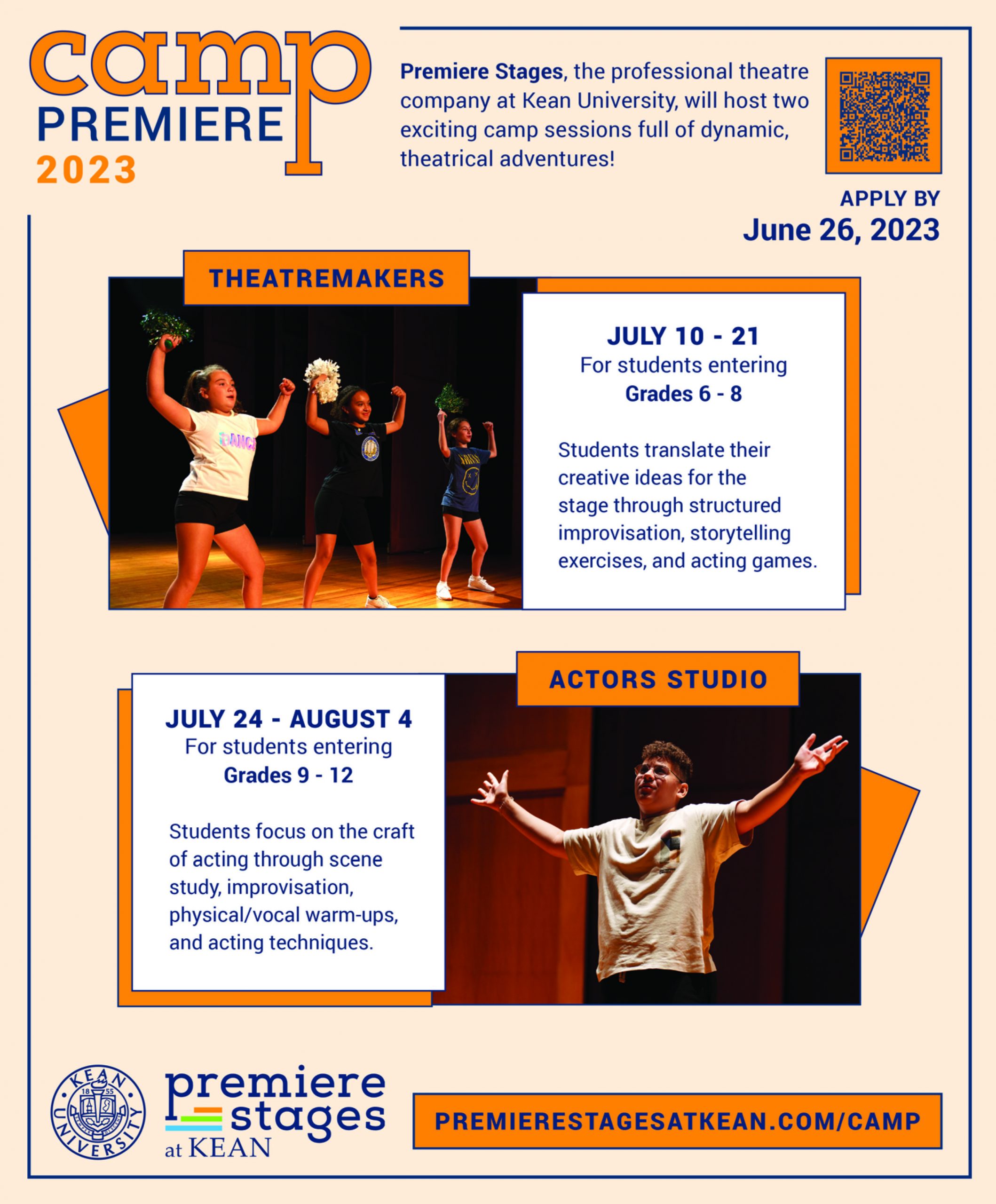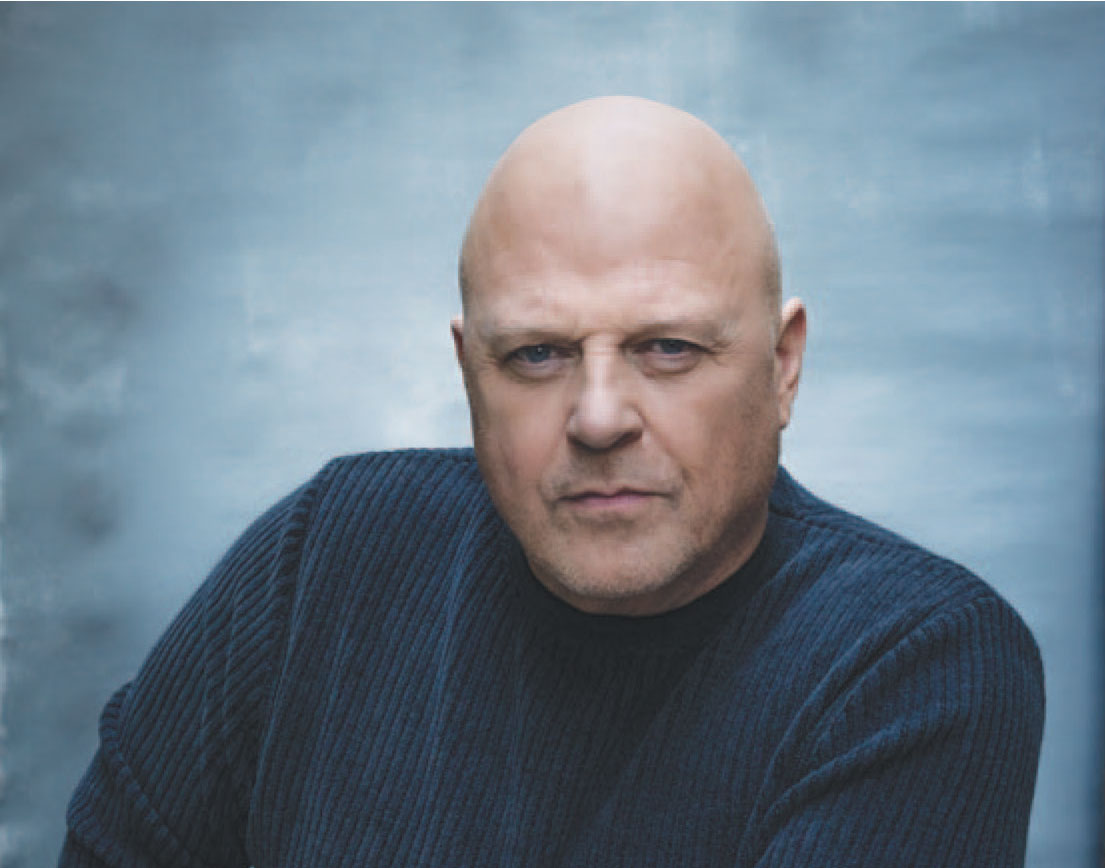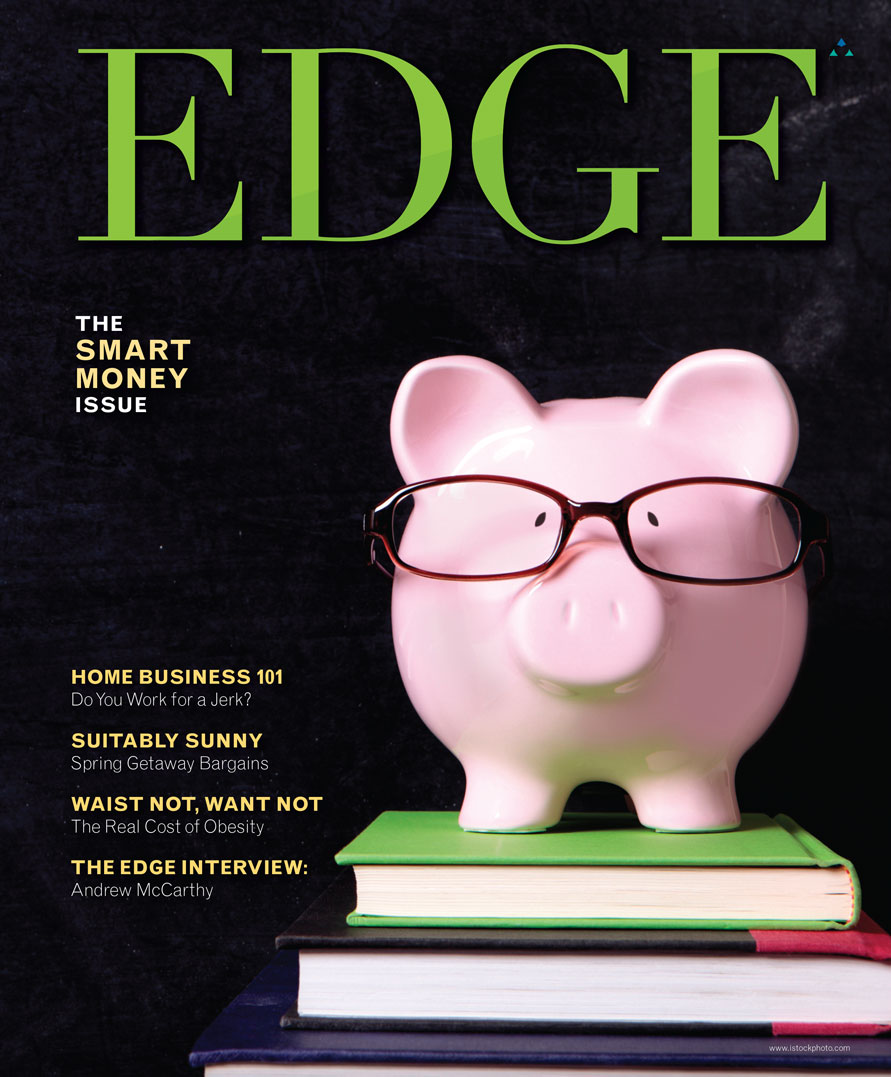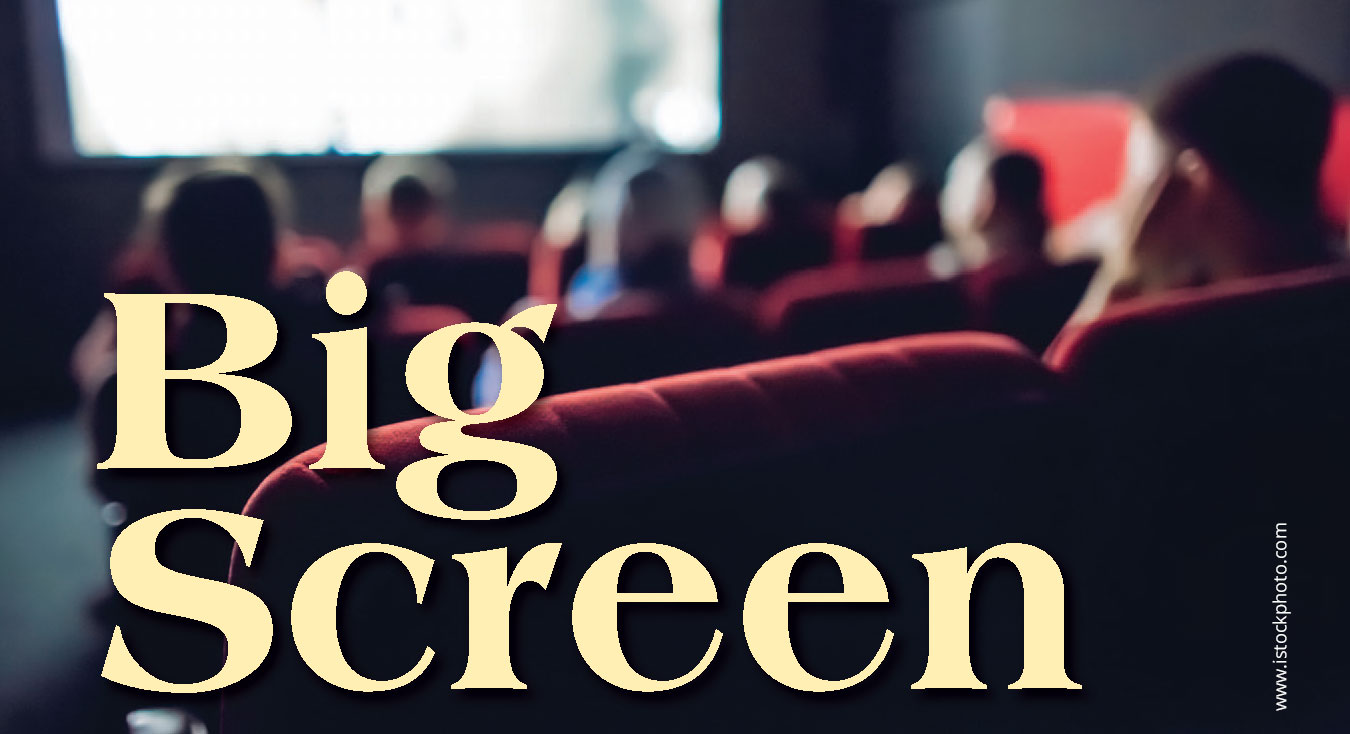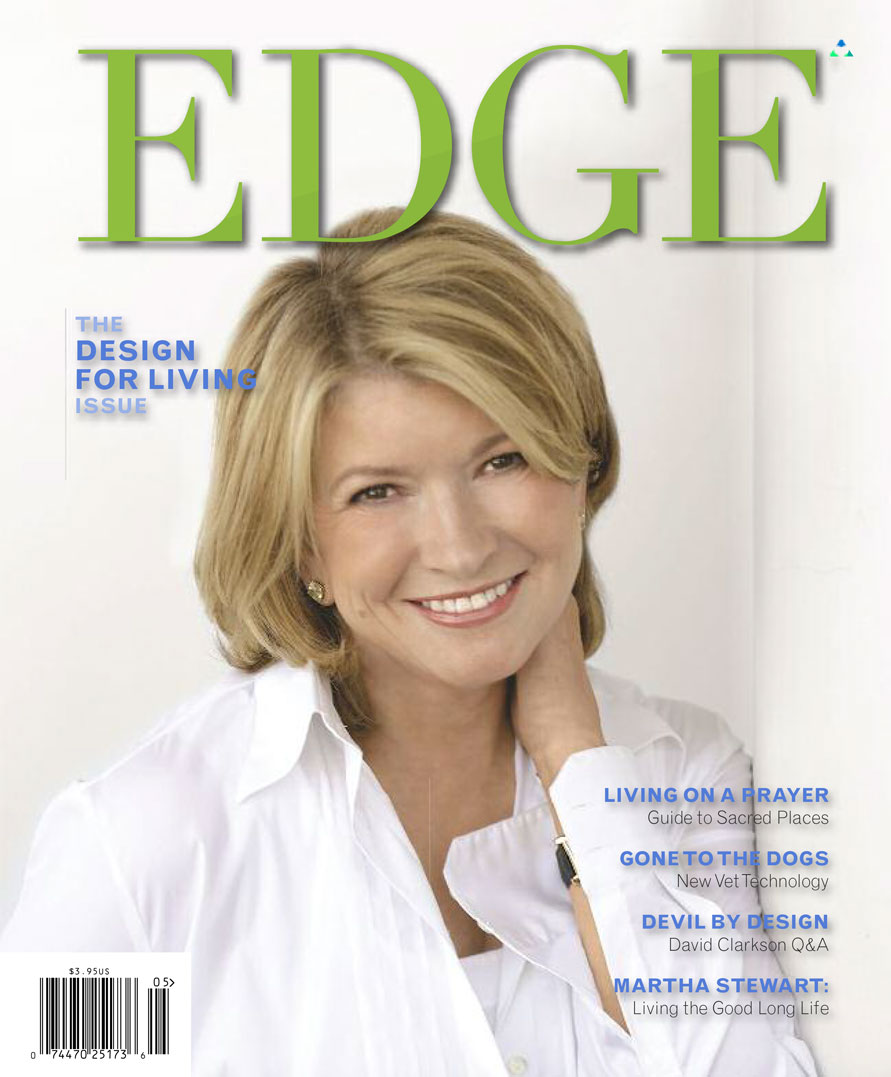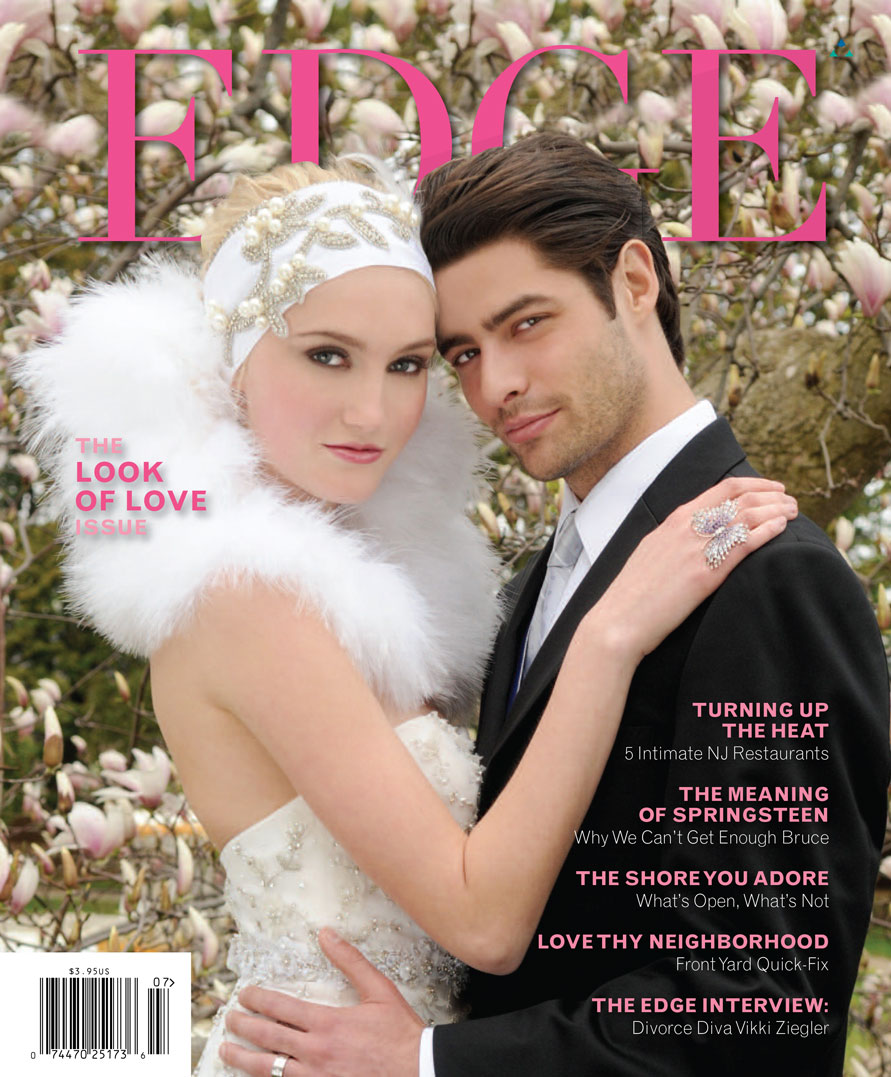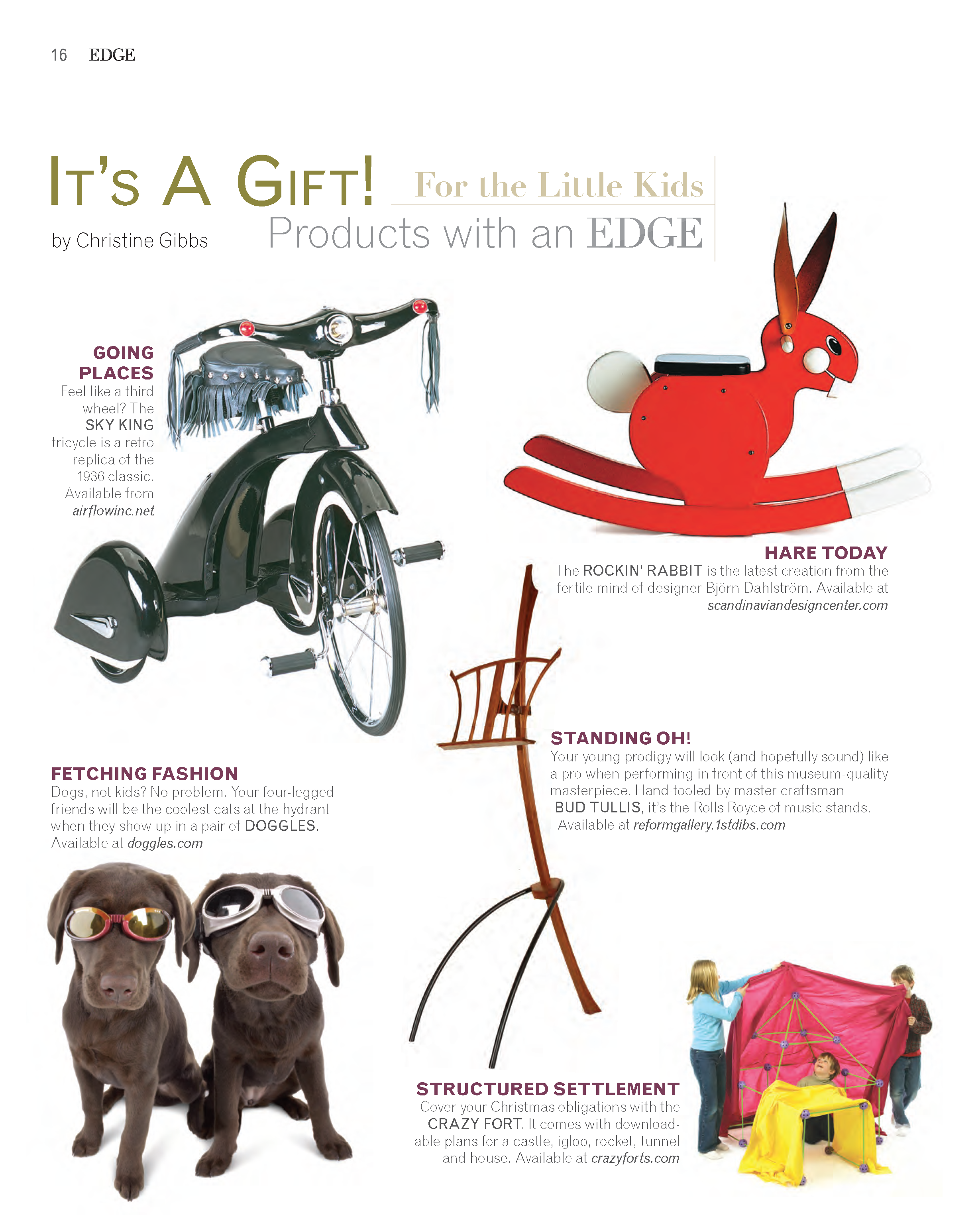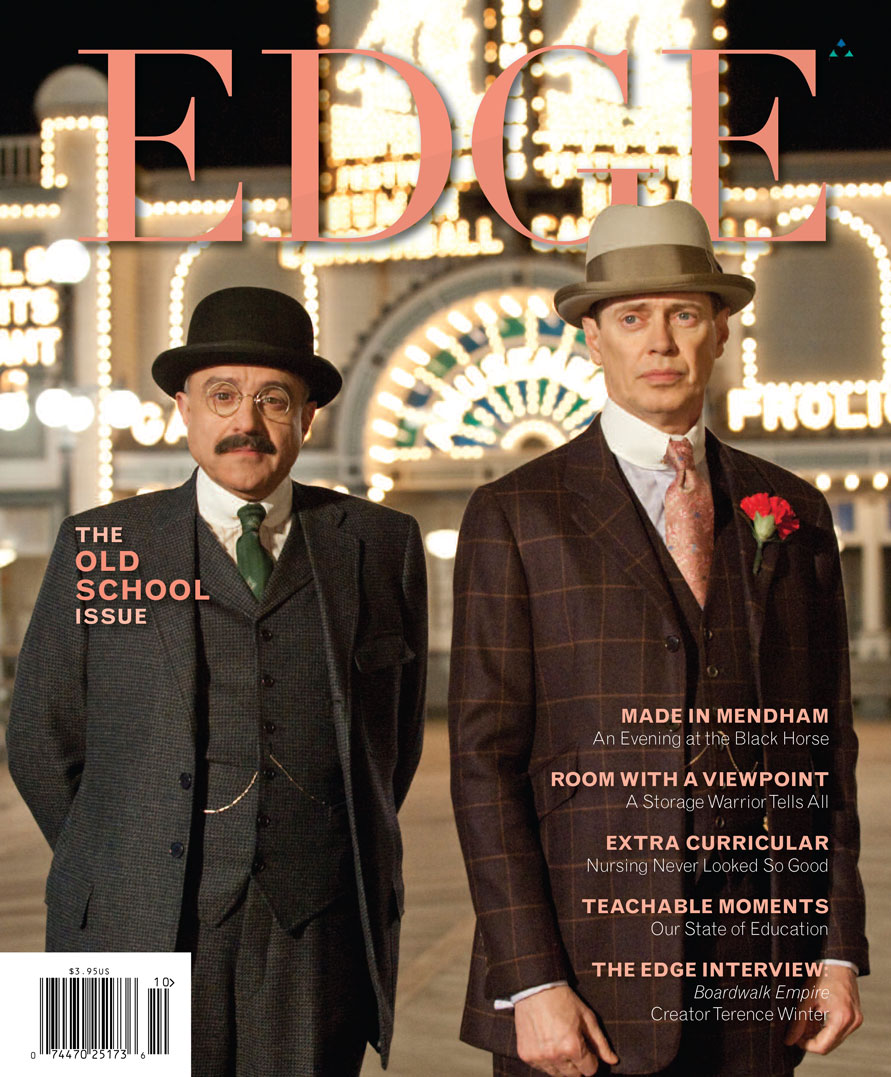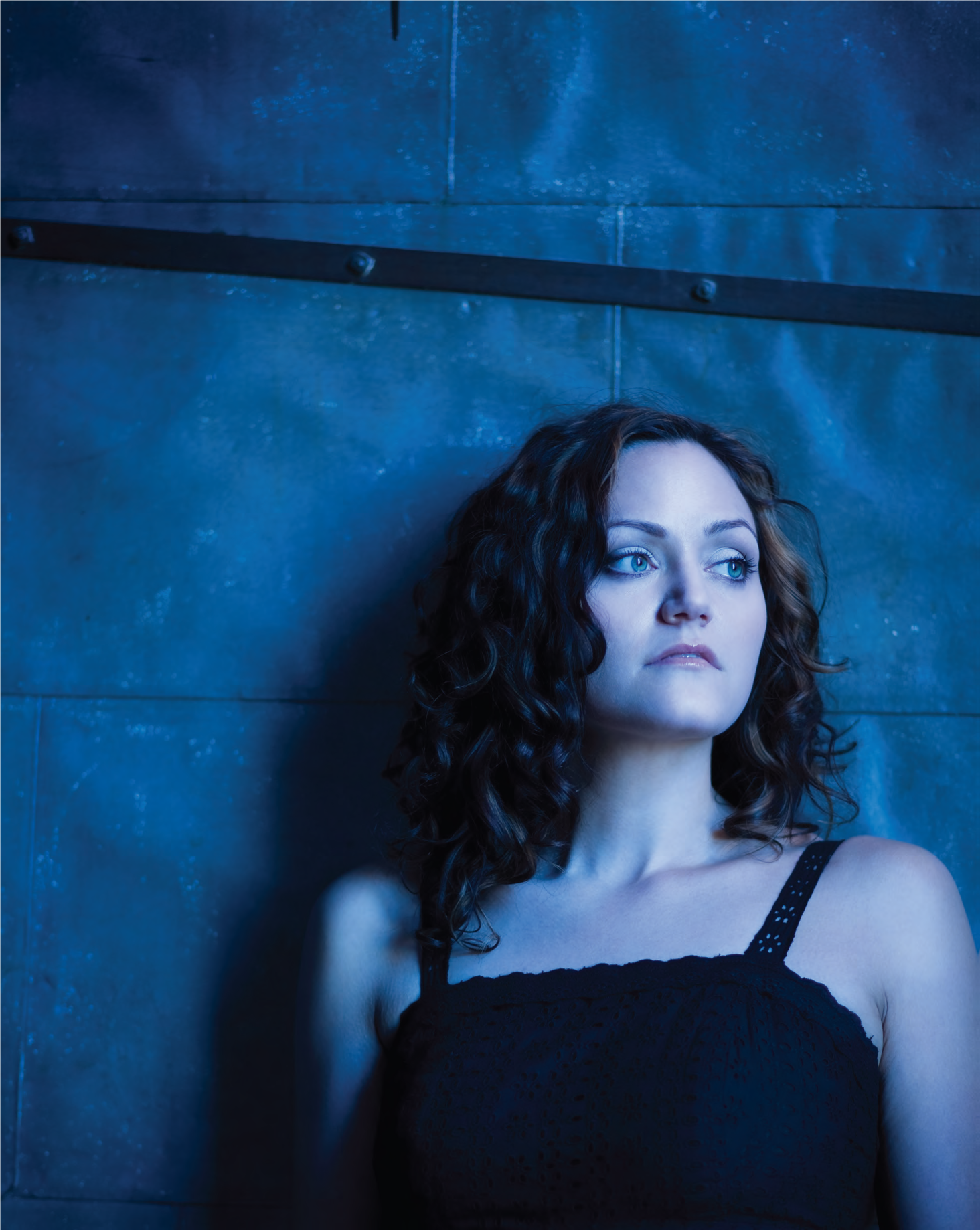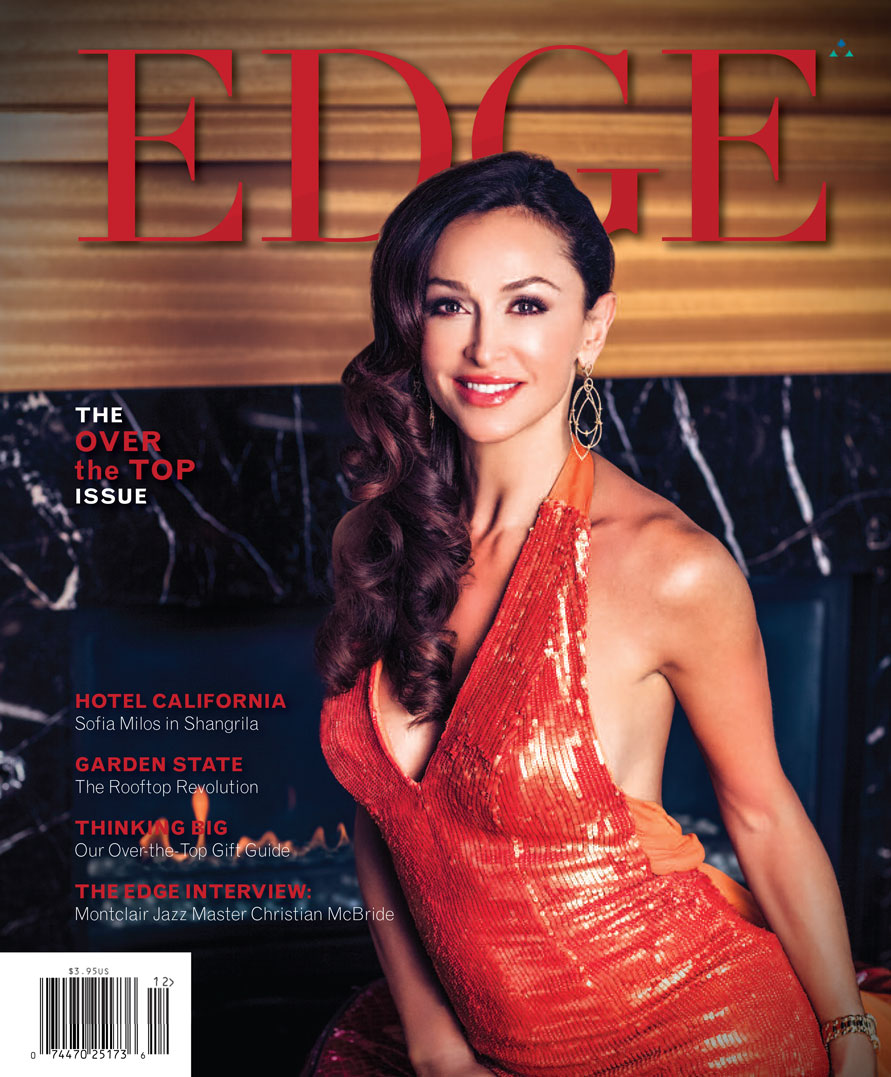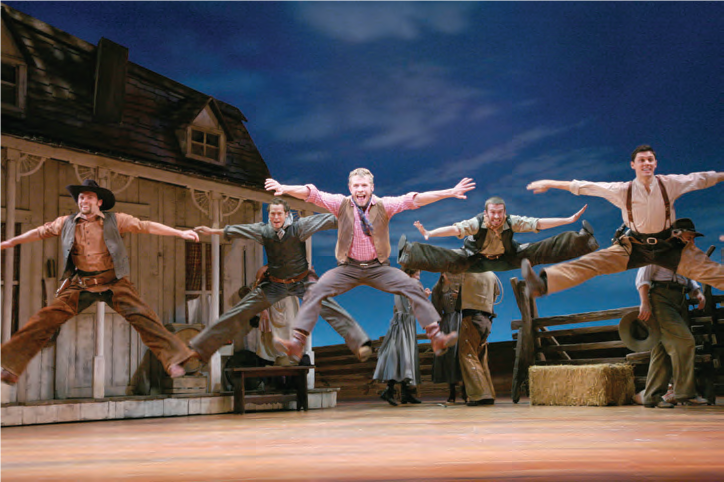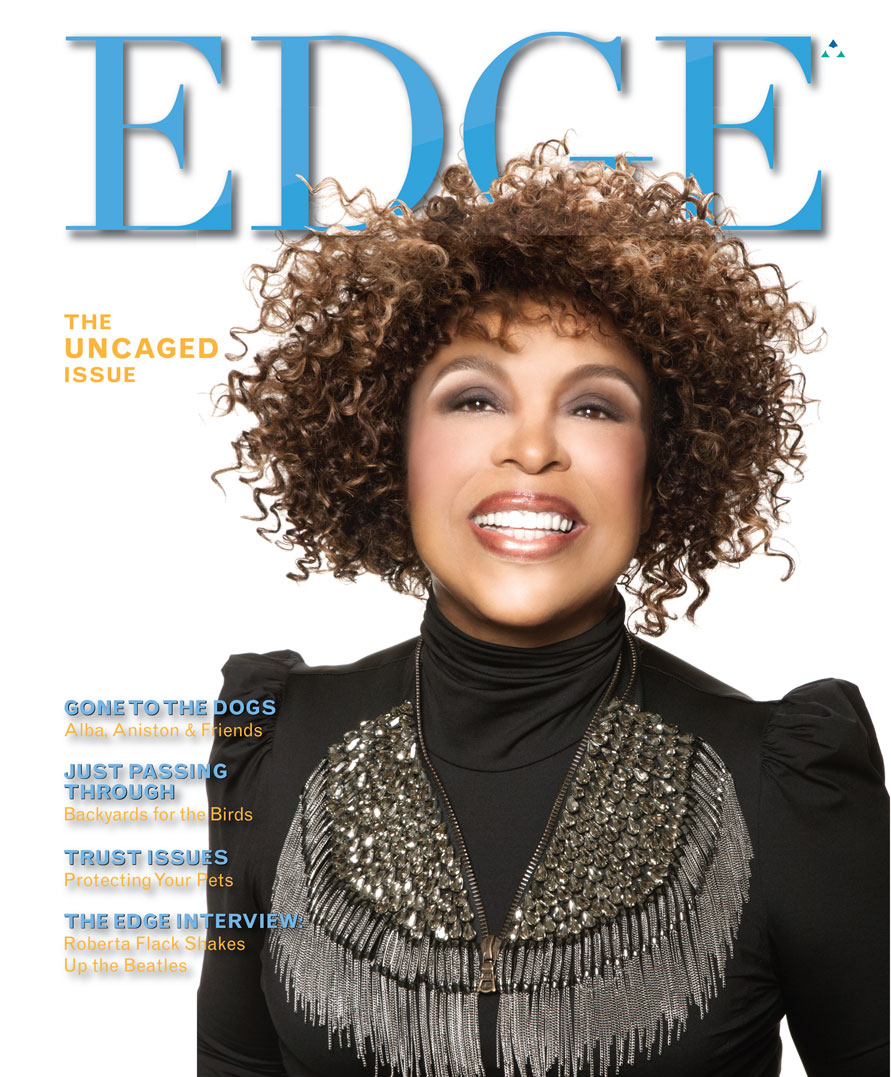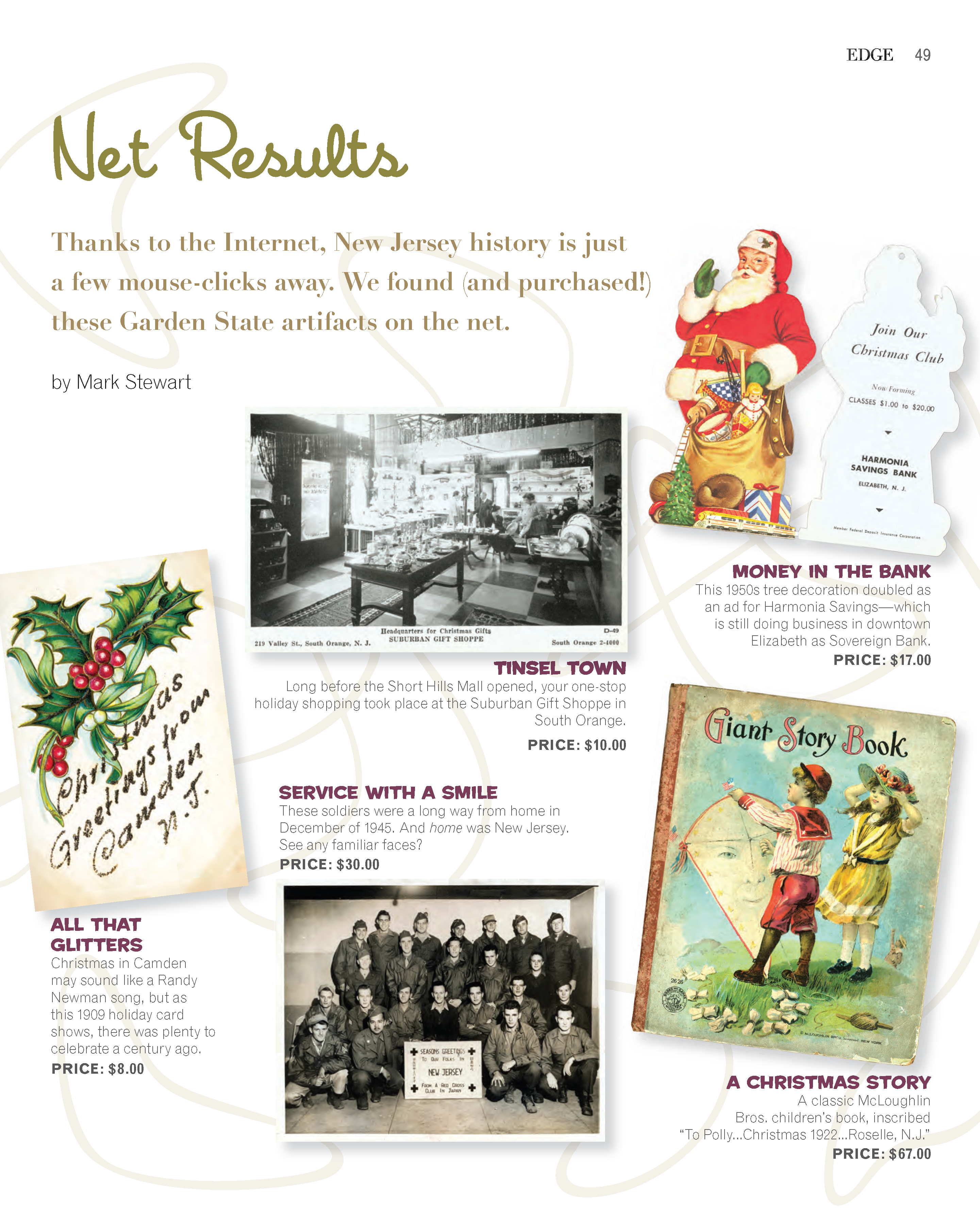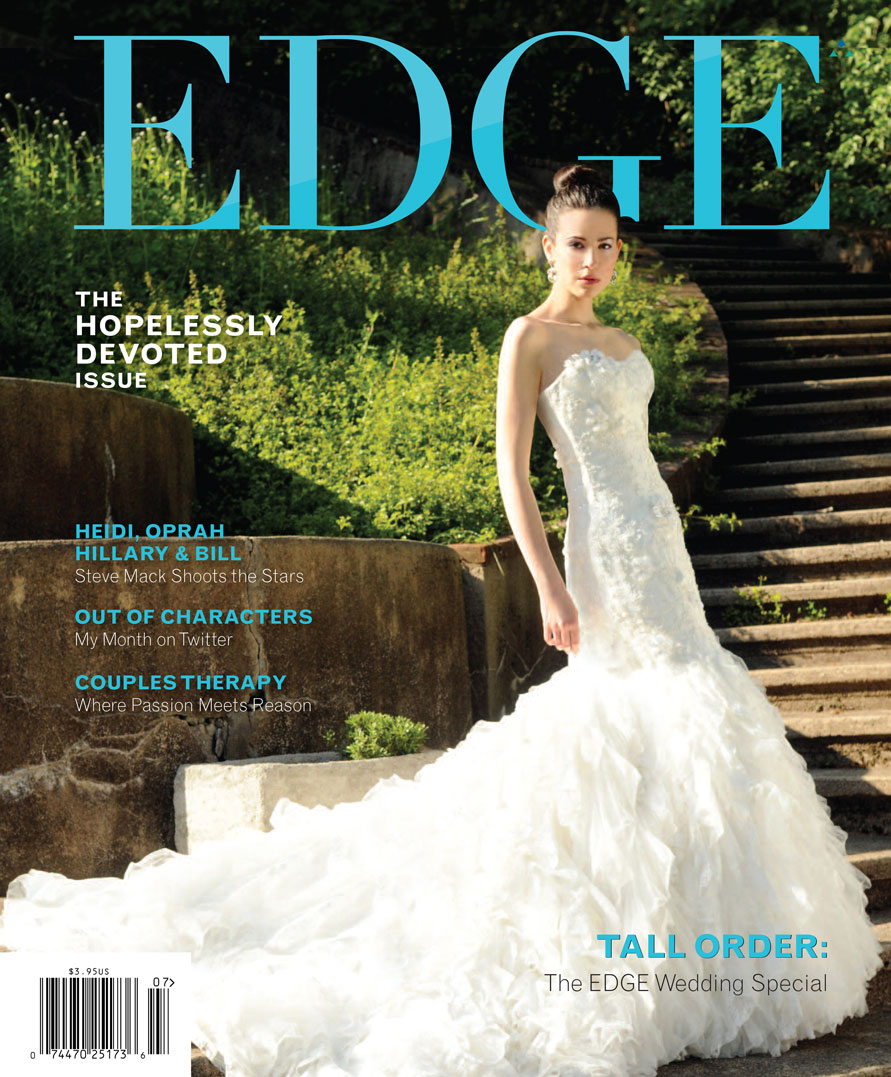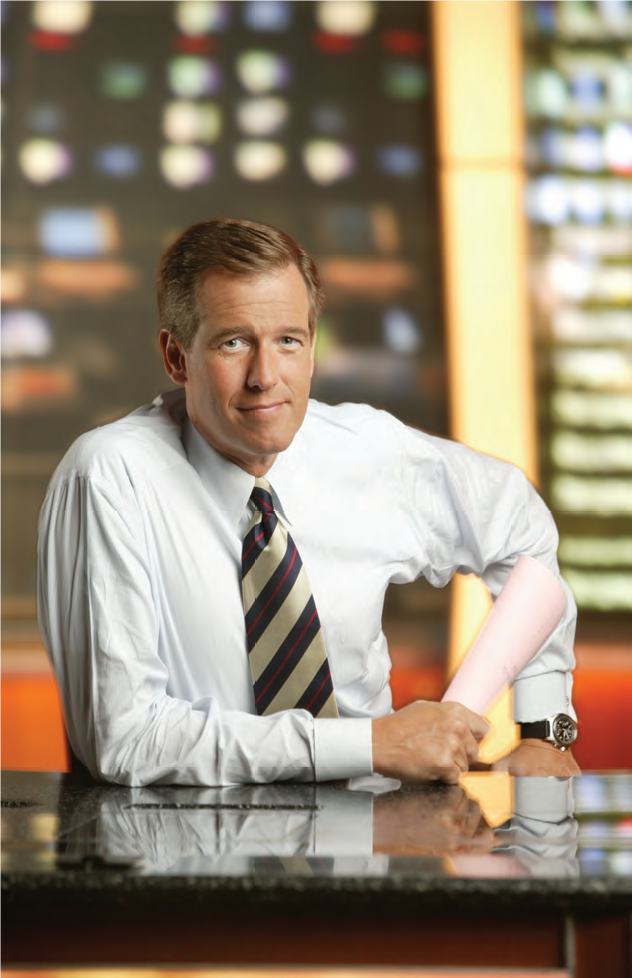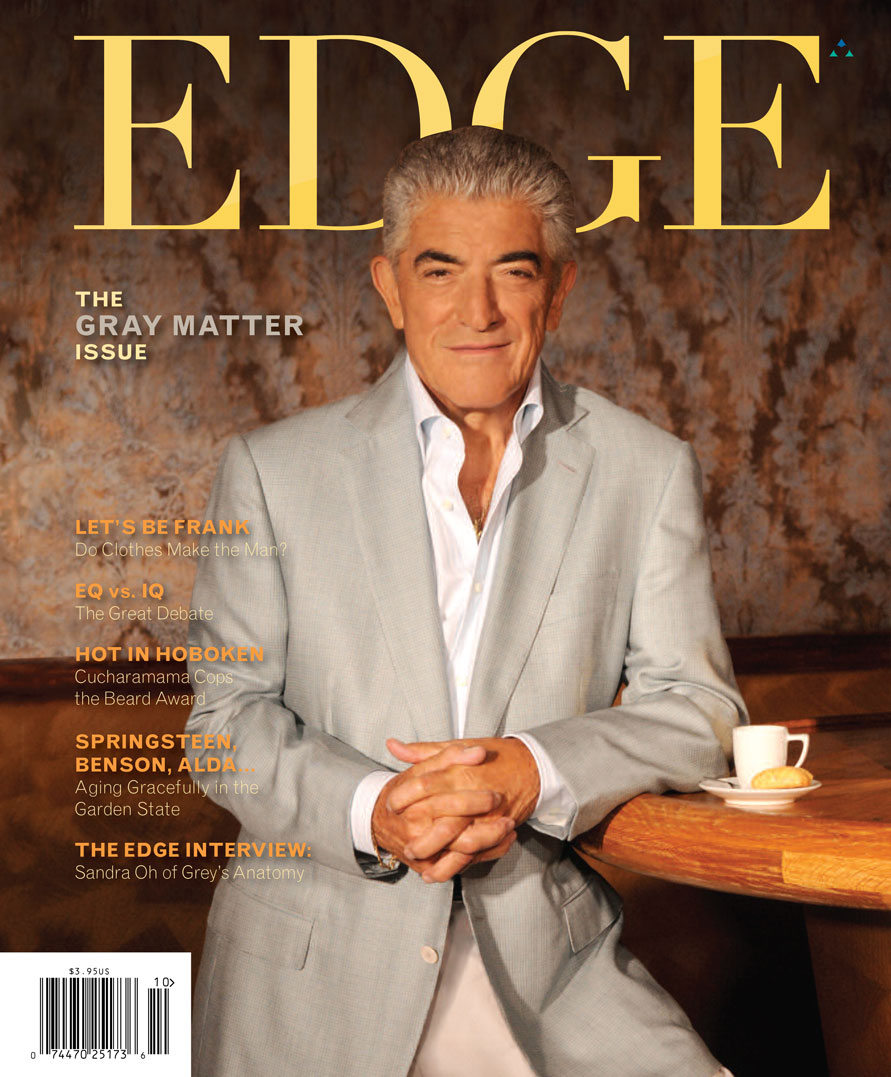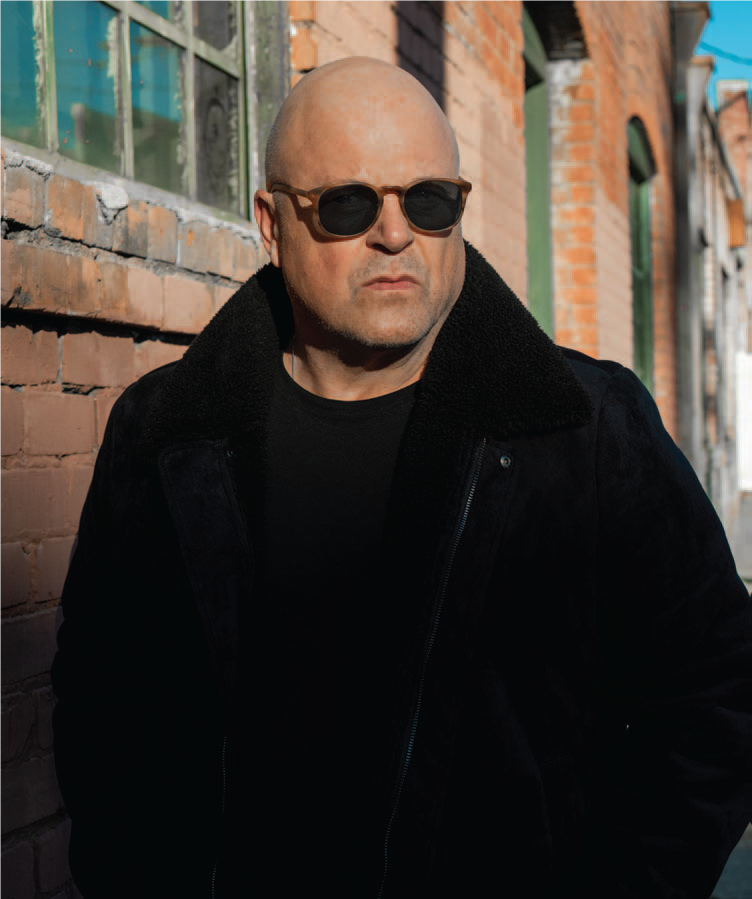
Christian Witkin Inc.
One of the profound challenges for an actor is portraying the humanity of a character in subtle and unexpected ways. Michael Chiklis can do it in his sleep. He made us root for the bad cop on the riveting and often unnerving FX series The Shield and made our hearts ache under fifty pounds of orange rock makeup in Fantastic Four. This year basketball aficionados are loving him as NBA legend Red Auerbach in HBO’s Winning Time and he just finished filming The Senior, the true story of a 50-something college football player. Gerry Strauss wanted to get a feel for how Michael manages to inhabit the myriad characters he has played. Leveraging his own life experience and passion, it turns out, is what makes them leap off the page and onto the screen.
EDGE: What is your process for playing a real person like Red Auerbach?
MC: I basically research them and get a sense of the kind of person that they were from their own words, as well as from others. And then I try to pay deferential homage to them. But I try to keep it real, obviously. To play someone like the late great Red Auerbach is a joy, especially with someone with the pedigree of [executive producer] Adam McKay. My first episode was directed by Jonah Hill and all of my scenes were with John C. Reilly [as Lakers owner Jerry Buss]. We had a great time working together.
EDGE: You grew up a Celtics fan.
MC: Yes, and I wish my dad was still around, because he was such a huge fan and he loved Red Auerbach. I don’t know how a lot of the things that Red did back then would play in today’s world. I mean, can you imagine a guy on the sidelines lighting up a stogie because he feels like the game is over? He was known for his gamesmanship—it wasn’t beneath him to turn the heat up in the guest locker room to 95 degrees and shut the windows. He wasn’t a cheater, but he would definitely push some boundaries, for sure. But I’ll tell you what, when you read books that he’s co-authored or you read books by people like Bill Russell, the way that guys speak about him, his players loved him so much. When you play for someone for years and all you have to say is how much you adore him, there’s something to that, it speaks to a person. Red knew how to manage people. He understood what people needed and treated them with respect. He didn’t just tell them, “I’m the boss, and this is the way it’s going to go.” My understanding of Red is that if you played with him, he loved you and listened to you and collaborated with you. He was very inclusive, progressive and forward-thinking, especially in the city of Boston. That’s why his name is etched in the parquet floor. I’ve had an opportunity to play some really iconic, real-life people through the course of my career, and I approach them all in the same way with tremendous respect— with no ax to grind and no agenda in terms of the way I want to portray them.
MC: I play another real-life guy who was the oldest player in the history of college football. Mike Flynt, at 59 years old, tried out for and made his old college football team. He had been thrown out of school his senior year for fighting with another player and he always regretted it. It’s a redemption tale, an underdog tale, and it’s a really wonderful story and a great script.
EDGE: Your first big role was playing John Belushi in Wired, the film version of Bob Woodward’s book. Not many people outside Hollywood know this story.

Christian Witkin Inc.
MC: It was heavy, heavy stuff for a 24-year-old. I was a well-trained, raw visceral actor. But this was my first on-camera job. Most people I know in this business, they put their toe in the water, they get their feet wet, they’re an extra on something, they get to see how things work. My very first job was playing an icon in an incredibly controversial mess of a film. I didn’t know what a “mark” was! Someone said, “Hey, Michael, Ed Feldman, an Academy Award-winning producer, and Bob Woodward, the guy who took down Nixon. On the other side of it was Mike Ovitz and Dan Aykroyd and all of the Saturday Night Live folks and the powerhouses of Hollywood. And I had no idea, I was really ignorant. I just thought, Wow, I get to play John Belushi. After Wired, I was being told that I would never work again. snuggle up on your mark.” I’m like, “What’s a mark?” I had no clue, from a technical standpoint, what I was doing. When I played Belushi, people said at the time, “Oh, you were so brave for doing that.” I wasn’t brave. I was ignorant. I didn’t know. And the honest answer is, I don’t know if I would’ve done it if I knew it was going to be so controversial—and especially if I knew that the family was against it. On one side of it was To think that [my career] was over for me before it started—that was a scary time. But I have no regrets. I’m glad that I did it because it started my life in film and television, and I learned a lot. I learned a lot about myself.
EDGE: How did that experience change your perspective?
MC: When you go through adversity of that kind early in your life, it gives you an acute appreciation of simple things—your health, the people around you and, of course, your work, how thrilling and awesome it is. I thought, I have no power, there’s nothing I can do about this. All I can do is do the best work that I can do in whatever situation I can find myself in, and hope that the work speaks, and that I can come up that way. That’s the only thing I knew. I didn’t have any recourse at the time. It certainly wasn’t like now, where the world is so full of grievance. So I just did whatever I could to keep going forward. And I’m still here, and I’m still working and doing really cool projects.
EDGE: When did you first become interested in acting?
MC: My parents tell me that when I was around five, I announced to them that I was going to be an actor and they thought, Next week you’ll be a baseball player, or a fireman, or whatever. But I was an oddly focused young person. I always knew that I was going to do it, and I never changed my mind. I had this sort of myopic view of acting. I knew that’s what I wanted to do, and I don’t know why. As a 58-year-old man, I look at that and I shake my head, and I’m like, How? Some people still struggle with what they’re going to be when they grow up and they’re in their forties. I feel very fortunate that I always had that personal awareness that I wanted to do this for my life.
EDGE: Did you have any early influences?
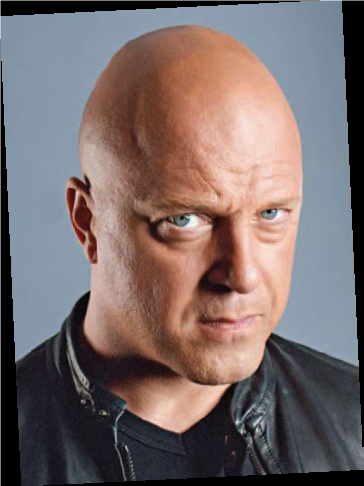
FX Networks
MC: There were a couple of things that flipped switches for me. One was a television show with Frank Gorshin and Rich Little called The Kopykats that was on when I was about five or six years old. I used to do a ton of different voices and I would do them doing other people—like Frank Gorshin doing Rodney Dangerfield. I would stand in front of my big, fat Greek family, and I would go, “Hey, I’ve seen better faces on an iodine bottle.” I’d get a big laugh and that dopamine high from it. So, that was sort of affirming. When I got older I watched movies like On the Waterfront and A Streetcar Named Desire—two films that Marlon Brando starred in. They had a profound effect on me. I remember watching those films in the dark and going, I know this is what I’m going to do. I know I have to do this.
EDGE: Who else moved your career along?
MC: This gentleman named Mark Kaufman became sort of an early theatrical mentor of mine. I had an incredible opportunity to help him open the Merrimack Repertory Theater, a regional theater in Lowell, Massachusetts, the town I was born in. I had sort of a backstage pass to watching that whole process happening, to be there every step of the way. It further affirmed to me, yeah, this is my life, this is what I want to be doing. Also, I was taught very early on that people who have longevity in their career are people who have a root or a foundation in classical training. That’s why I went to Boston University. It offered a classical conservatory setting, and I studied the craft in earnest.
EDGE: How did you envision your acting future as a young man?
MC: I thought my path would be off-Broadway, Broadway, and then to the silver screen from there. That was what I had in my head, but the best laid plans, right? At 21, I moved to Brooklyn after graduation and hit the pavement. I took jobs bartending and waiting tables, and then started doing off-Broadway and off-off-Broadway. Those were fun times, very Dickensian times— the best of times and the worst of times—because it was extremely exciting to be in Manhattan pursuing what I always wanted to pursue. But it could be frustrating and terrifying, fraught with all different kinds of problems and issues. But it was amazing too, it was exciting. I was there for three years when I finally got what I have to consider to be my big break in Wired. I mean, there’s nothing normal about the progression of my life or career as an actor. It’s very, very different.
EDGE: The role with which you’re most frequently associated is Detective Vic Mackey, the lead character on The Shield, which ran for seven seasons. Mackey and Tony Soprano and later Walter White were pioneers of the television antihero in the early 2000s. What went into making The Shield so good?
MC: A couple of things. To me, everything starts on the page. In the case of The Shield, you started with the pertinent thematic question: What are we willing to accept in post-9/11 America from law enforcement to keep us safe? There were other sub-themes, but that was the thematic question posed by the entire series. That’s why it holds up today; it’s an incredibly relevant question to this moment. Having said that, you need very, very thoughtful writers—writers who aren’t heavy-handed and just want to proselytize and beat the audience over the head with something—people who actually want to ask questions from every corner. That’s the basis for a great film or television show. Then you have to cast it correctly. When you think about it, it really is an incredible confluence of things to come together for any film and television show to be good, because it’s such a team sport, right? So many things have to go right. And literally, one thing can go wrong and derail the whole project. We did seven years on a show where I think, as a collective, we all looked at each other and knew that we were doing something special and sort of remarkable, and no one wanted to drop the ball. Everyone wanted to carry their own water, if you will. So, I just think that it’s a miracle of cooperation, it’s a little bit of luck, and it’s a lot of thoughtfulness and restraint.
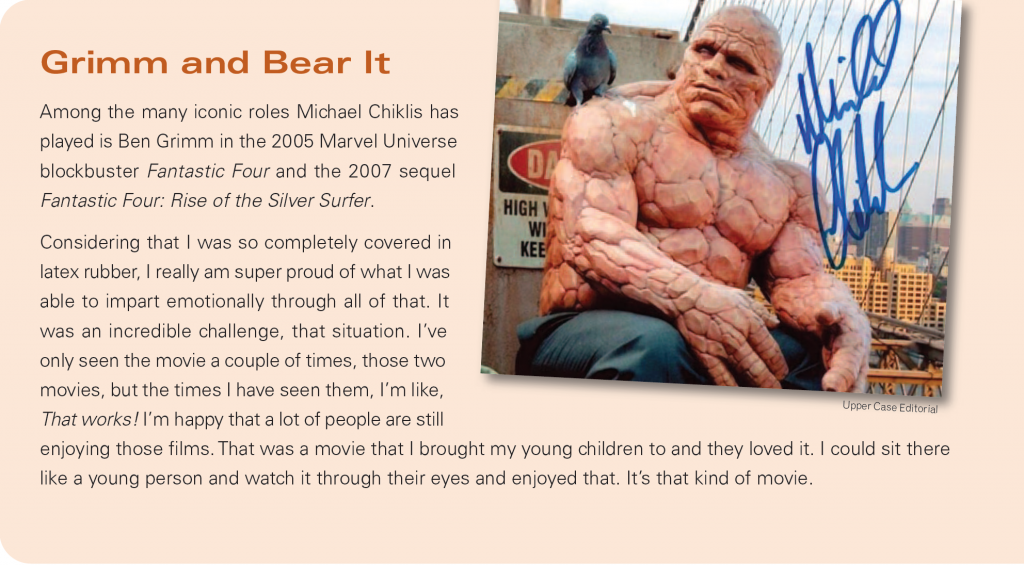 EDGE: How difficult is it to assemble a cast like the one in The Shield?
EDGE: How difficult is it to assemble a cast like the one in The Shield?
MC: Artists notoriously have egos, right? We all have our egos. But I think if your egos are healthy, you keep them in check. You know when it’s time for you to add your pinch of salt, and you know when not to be another cook in the kitchen‚ to let other people do what they do well. If you look at any great series, you’ll hear everyone involved say how collaborative people were, how exciting it was to get up in the morning and go to work every day, how the collaboration was rare and distinct in their career. We’ve all done shows that we wish weren’t on our résumés, and that’s part of it—that’s how you learn what you don’t want to do, how not to collaborate, and how things aren’t supposed to go. I’ve been very fortunate…I’ve been in a number of really, really good collaborations. I noticed that you guys did a cover interview with Jason Alexander, who I recently saw on The Marvelous Mrs. Maisel. That’s an incredible production, incredibly well made, beautifully shot, great cinematography, crisp writing, amazing acting, pacing—that’s a lot of hands, that’s a lot of people. And it’s thrilling when you see something come together that way. It’s thrilling to be a part of something like that.
EDGE: Michael, what keeps you centered at this point in your life and career? I see you’re producing and directing, recording music, getting involved in Alzheimer’s advocacy and even dabbling in martial arts.
MC: All of the above. Peaceful, joyful and centered. Variety is the spice of life, and these things keep me interested and connected to my artistry. I think I’ll never read all the books I want to read; I’m humbled at all that I don’t know—and that I’ll never be able to imbibe. I’m a bit of a seeker in that way. I want to learn as much as I can. The one thing I’m terrified of is complacency. I’ve always felt that, the moment you start to believe in your own hype and think that you’ve got it all figured out, is when the bell has tolled for you. I feel like life is short enough that you can continue learning until your last day. And that’s what I intend to do. I want to try to get better with everything that I do. I’m a drummer, right? When I’m playing drums with friends and singing, it’s pure joy. I don’t go out of my way to promote my music, but I put it out there a little bit so people can find it, but I don’t pursue it in that way. The things that are important to me are very, very simple: my family, my friends, my work, the world, people, I love to travel, I love to read, I love to listen to music of all kinds, every kind. I have the most eclectic music collection of anyone I know. I’ll listen to Rachmaninoff, and then The Tubes, you know what I mean? And everything in between. I guess this is part of my Greekness.
EDGE: How so?
MC: I grew up around a bunch of philosophers. My father is a very philosophical person. And in New England you have the winters and there’s six months at a time where we spent a tremendous amount of time inside talking and arguing and debating and philosophizing. I’m concerned for the world right now because people are increasingly afraid to speak their mind and say what their opinions are, for fear of repercussion. If not for all the debates I had with my friends and my family over the course of years, I wouldn’t have learned so much of what I know. So, I really am a big believer in conversation. I love talking to people, to my children. My oldest daughter is really coming into her own as a writer. She’s a woman of letters, and she’s very bright. My youngest is just going to—I don’t even know—I’m scared of her. She’s so incredible. They’re both incredibly bright. I know I sound like a very, very proud father—which I am—but they merit it, and I’m brutally honest. Fortunately, my oldest lives a mile down the street and my youngest, who recently graduated from college last spring, moved back in, and she’s here temporarily and working hard, and socking money away, trying to set herself up. It’s wonderful that my kids are close. The other thing is, my family loves to cook. The table is a big part of our lives. So we cook together and we sit at the table, and then it gets loud. We’re talking about this thing and that thing, and running things by each other constantly, and it’s impossible to get bored.
EDGE: As you look back at the arc of your career, what thoughts do you feel you can share with actors who are just starting out in the business?
MC: No two people have the same life path, right? So it’s impossible to give someone real advice about how to become a successful actor. There are things I can tell you that I think will help and work for you, and be there for you through the ups and downs. But no two paths are the same. I say this to people all the time that aspire to film and television careers. Actors may have crossover in their careers, but no two actors have the same trajectory. We have crossover in terms of places that we may have worked, or things that we’ve gone through along the way, but I’ve never met two actors with the same trajectory.
When producers decide to “Go Big” with a movie title, it’s not always a good idea. It sets the bar high and, should it come up even a little bit short, invites the wrath of audiences and critics. Which is why these films stand out—and stand up—as the 15 “Biggest” in Hollywood history.
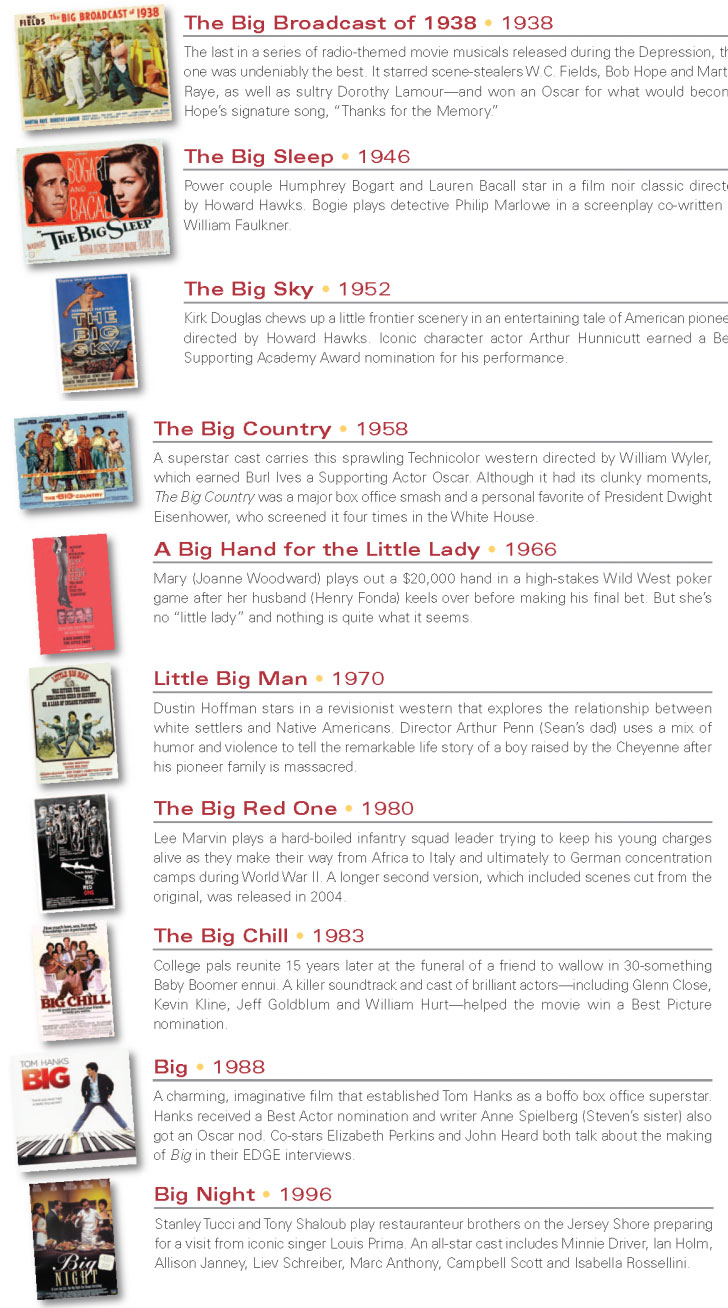
David Drake is in the house, and this— in the age of name-brand chefs playing musical stoves at multiple locales—is enough to raise the excitement level at the restaurant that bears his name in downtown Rahway.
Where David Drake goes, those with curious and refined palates follow. Thus, Restaurant David Drake has become a must on dine cards statewide. The chef who has done star turns at Stage House Inn, Ryland Inn and the Frog and the Peach here in New Jersey, as well as at the River  Café in Brooklyn Heights, turned an old insurance agency into a restaurant in 2005. The city that too often had been associated with a prison took on new luster and a new (and desirable) distinction: dining destination. Then, in 2007, he
Café in Brooklyn Heights, turned an old insurance agency into a restaurant in 2005. The city that too often had been associated with a prison took on new luster and a new (and desirable) distinction: dining destination. Then, in 2007, he  opened Daryl Wine Bar & Restaurant in New Brunswick. This year, he’d also been spotted on KP duty up at Alice’s Restaurant at Lake Hopatcong. When a chef spreads his wings in ways other than through the menu at his eponymous restaurant, there can be cause to worry. No worries in Rahway. Restaurant David Drake’s chef de cuisine Peter Turso is technically skilled and culinarily gifted. But on this night, with Drake in the kitchen and then doing a post-dinner rush survey of dining rooms both upstairs and down in this posh, yet winsomely rustic setting, there’s a confidence that speaks of decades of experience in high-toned, high-pressure kitchens.
opened Daryl Wine Bar & Restaurant in New Brunswick. This year, he’d also been spotted on KP duty up at Alice’s Restaurant at Lake Hopatcong. When a chef spreads his wings in ways other than through the menu at his eponymous restaurant, there can be cause to worry. No worries in Rahway. Restaurant David Drake’s chef de cuisine Peter Turso is technically skilled and culinarily gifted. But on this night, with Drake in the kitchen and then doing a post-dinner rush survey of dining rooms both upstairs and down in this posh, yet winsomely rustic setting, there’s a confidence that speaks of decades of experience in high-toned, high-pressure kitchens.
There’s no food misstep to speak of. The menus, both a la carte and degustation, are well-edited, largely seasonal and clearly focused on primary ingredients. It’s new American in a classical way— not silly-fussy, not kinetic with chemical experiments, not forcing taste issues by partnering two discordant flavors and calling it a “challenge” to the diner. That isn’t to say this is snooze food. Maine crab, flaky, sweet and tingling with freshness, is indeed challenged by a pickled cucumber chop underscored by an acidity that punches up the natural salinity of the crab. A swirl of heirloom tomato concasse brings out its sweetness and a cumin-scented tuile manages to unite every flavor on the plate. For a palate-cleanser, Drake puts a few favas on the plate, a meaty interlude between crab bites. There’s nothing revolutionary about the pepper-crusted seared yellowfin here, but its execution is flawless, including as counterpoints a rakish citrus salad and a feisty ginger vinaigrette you might not mind sprinkling on your next round of New Age sushi.
The textbook foie gras terrine can’t be ignored. Coupled with a mini ramekin of chunky fig preserves and a swirl of reduced cranberries, it’s a starter fit for Fall. When it’s a bitter-cold winter night, I’ll crave a big bowl of Drake’s carrot-ginger soup dusted with warming curry, sparked by lemon oil and made luxuriously rich by a pouf of whipped cream. That’s living right. Parmesan flecked gnocchi are treated right by being set in a wash of heirloom tomato water dotted with specks of the fruit along with scallions grilled and smoky and ready to be fork-skewered with those light, fluffy torpedoes of pasta. Drake always has had a masterful way with fish.
He handles a sea scallop with finesse by serving it astride carrots two ways: super-sweet in a soulful age, letting the broth enrich the scallop, and humble-hearty in a fricassee that adds texture to the dish. Halibut, pert amid a chop of alium-licked vegetables, laps up a basil pistou. But it’s the shrimp risotto that brings out my inner hoarder. The backdrop of lemongrass kicks the dish into high gear immediately, while snips of zucchini keep it grounded. Once you fork the whole assemblage into your mouth, it’s a wisp of Thai basil,  mysteriously minty and clovey, that makes the dish irresistible. Seconds? Gladly. Another irresistible accent partnership—the fool-proof combo of chanterelles and apricot puree—elevates slices of roasted duck breast, creamy white polenta and knobby baby turnips.
mysteriously minty and clovey, that makes the dish irresistible. Seconds? Gladly. Another irresistible accent partnership—the fool-proof combo of chanterelles and apricot puree—elevates slices of roasted duck breast, creamy white polenta and knobby baby turnips.
Chanterelles and apricots love each other and, in the end, they provide the flavor muscle for the dish. I’m just as fond of the roasted pork, which, on this night, was given the season-throwback sideshows of corn both in a purée and strained chowder, plus grilled asparagus. Here there is nothing on the menu for which you won’t find the right wine on the eclectic wine list. While there’s a wide price range, the middle-level bottles between $60 and $90 are where vinophiles will find relative bargains and the best connections to the food. We nabbed a midrange Charles Schleret Herrenweg Riesling from Alsace whose versatility with Drake’s food would be tough to match at any price.
I’m not sure I’ve met the match for the berry trifle here, largely because the almond shortcake that anchors the layering hits the trifecta of texture, balance of flavors and moistness. Tack on a rush of tart and sweet blackberries, a dollop of vanilla-scented cream and a scoop of strawberry sorbet, and you’ve got a truly grand finale. The chocolate tart—with its lemony pastry, brush of salted caramel, vanilla crème fraiche and sprinkling of pulverized pistachios—certainly can’t be considered an also-ran. Choosing cheese as dessert might find you presented with a plate of creamy Pierre Robert, a tangy goat’s milk number called Coupole, a nutty Pecorino, a butterscotchy aged Gouda and a spicy Cabrales, which is a dandy and snappy blue. It’s a fine choice for ending an evening here. So is making a reservation for next time on your way out. Restaurant David Drake is what a chef-driven restaurant is all about.

Editors Note: Andy Clurfeld is a former editor of Zagat New Jersey. The longtime food critic for the Asbury Park Press also has been published in Gourmet, Saveur and Town & Country, and on epicurious.com.
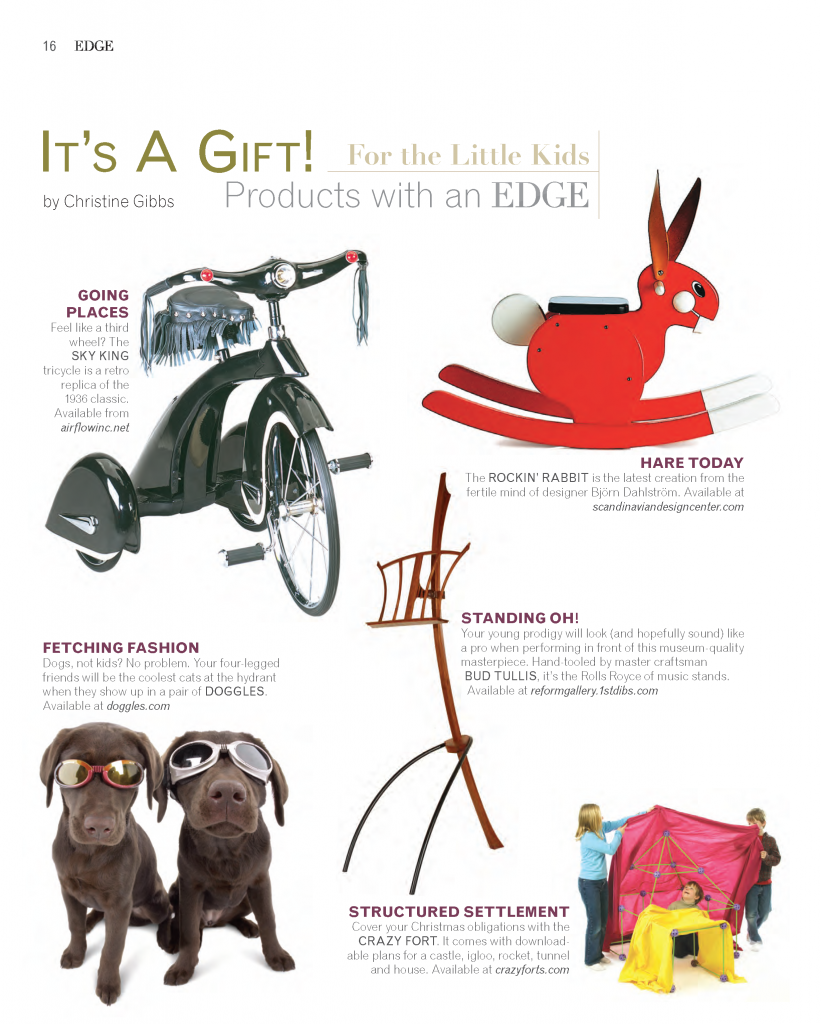

A Jersey Girl harnesses the power of the Net to make her own breaks in the music world.
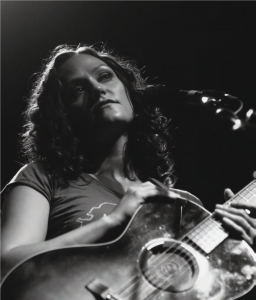
Photos: Deborah Lopez
There was a time in the not-too-distant past when the fate of a singer/guitarist/songwriter like Allie Moss would be in the hands of managers, producers, agents and lawyers. Indeed, the Folklore of Creativity abounds in cautionary tales of the tragedies inherent in the battle between art and commerce. Catching the public’s collective ear has always presented emerging artists with problems. For decades, they have been hostage to the stranglehold that commercial interests had on production, publicity and broadcasting.
Paying for studio time, getting good placement for your CDs in stores, and arranging for airplay frequently involved some sacrifices—like signing over percentages of one’s earnings. For life. The 20-something musicians of today, while hardly immune to bad endings like these, have taken progressively stronger control of their destinies. Moss, whose approach to self-promotion is as smart as her music, provides a refreshing view of the new, largely Internet-based methods of production and public relations.
The results speak for themselves. Just since the leaves began turning this autumn, she has had her song “Corners” featured on the ABC series Brothers & Sisters, followed by a career-boosting studio segment on Good Morning America. Moss’s fans keep up with her on Facebook, MySpace, YouTube, iLike and Tumblr. Her new album, Passerby, can be downloaded through iTunes or Amazon. Moss’s performance dates (she tours with Ingrid Michaelson) are listed at alliemoss.com. And those who hang on her every lyric can also hang on her every word at, you guessed it, Twitter.
Welcome to the world we live in—a bewildering matrix of blogs, search engines, social networking sites, cell phones, WiFi… but the basic situation is that you can access Ms. Moss’s oeuvre 24/7/365. Go check out her act at a club or in concert, and when you get home you can find dozens of her MP3 files; some are free, some are for-pay downloads. But the bottom line is that none of this is under the control— financial or artistic—of the record labels. Moss lives—or, more accurately, since she tours constantly, alights from time to time—in Jersey City. She laughs about her somewhat frantic life and admits that touring seemed an impossible goal when she was a child, since she suffered from paralyzing stage fright. “I got so scared once that I completely forgot the lyrics to the song I was singing. I just stood there, horrified and embarrassed.” As a teenager, Moss began journeying into New York to listen to friends work in clubs.
This led to her singing and playing backup, and then to finding gigs of her own. Several years ago she met Michaelson, a fast-rising singer and songwriter from Staten Island, and began backing her. Eventually she started to tour with Michaelson. Soon came their appearance on Good Morning America and then a gig as an opening act for the Dave Matthews Band. As Moss rattles off the names of her favorite contemporary musicians—among them Josh Ritter, Death Cab for Cutie, David Bazan and Greg Laslow—she habitually refers to their web sites, their pages, their video clips and the mashups they’re in. If you’re a young musician, it’s an open-source world. As Moss says, “Radio is cool, and once you’re established it’s critical. But it’s hard to break your music on radio if you’re not already a name. It’s so easy to find the music you want to hear online.” voice and deft guitar work.
Her writing explores the complex, sometimes joyous, sometimes heartbreaking passage from teenager to woman. Moss dodges the Pollyanna mentality that can make some folk music unpalatable. Her urban background doesn’t provide room for many illusions, but she knows, and expresses, the difference between being skeptical and falling into cynicism. Moss talks writing while on tour, snatching bits of time to jot down lines in an always-present notebook. On the song “Paper Cup,” she balances hope and caution, encouragement and doubt, and her delicate tones perfectly balance her spare, elegant playing. Many older, more experienced writers would love to have her rhetorical command. Of course, there’s the side of Moss that likes to sing “Rubber Ducky,” too. A spare, elegant “Rubber Ducky,” to be sure. In the future? “I love playing with Ingrid, and I guess I’ll do it as long as it works for both of us,” Moss says. “She’s so talented and so smart. I’ve learned tons from her, not only about writing and playing, but about the business side, about how to deal with touring.” So there’s that, and doing gigs in places like Kenny’s Castaways and the Baggott Inn in New York and Maxwell’s and The Saint in New Jersey, and writing songs. Moss also teaches voice.
She’s a devotee and practitioner, and, she thinks, the only Certified Level–1 instructor in the area of a method known as Speech Level Singing. And then, after all that’s taken care of, she allows, half sarcastically and half-wistfully, that she’d like to find time for some “normal” stuff. Alas, as Allie Moss’s star continues to rise, she may find that normal is a relative term…and that time could soon be the most precious commodity of all.
Editor’s Note: Bill Mehlman is a freelance writer with a passion for the music business. He lives and works in New York City.
High-Performance Cosmetics Don’t Have to Come with a Knockout Price.
Competition in the beauty business has always been brutal. Today, with everyone cinching their belts, it’s a no-holds-barred event. Budgets may be tight, but the good news is that there’s no reason to cry “Uncle!” when it comes to the four essentials—moisturizer, mascara, lip balm and concealer. As we all know, in these divisions there are champs and bums. I’ve crowned a winner in each, and also identified the top contender. Whether you choose to splurge for luxury items or stick to the staples, these picks should keep you covered. The good news is that each weighs in at under $60. So let’s get ready to rumble!
MOISTURIZER
CHAMPION: Dr. Hauschka’s Rose Day Cream
PRICE: $42.95 A great moisturizer is the keystone of any beauty regimen, and Dr. Hauschka has it on lockdown. This is a rich, luxurious daily moisturizer, which actually manages to keep you covered in all four seasons. Soothing rose ingredients nurture and renew sensitive and weather-damaged skin while protecting your face against dryness by using soothing extracts of rose petal, rose hip and avocado. Thirty rose flowers go into each tube of Rose Day Cream, which lasts a staggering three months.
TOP CONTENDER: Eucerin Sensitive Facial Skin Moisture Lotion
PRICE: $18.00 Yes, I understand the juxtaposition from Dr. Hauschka’s to Eucerin, but this is really a great product for an amazing price—a true drug-store steal. Although Eucerin is geared toward drier skin types, this moisturizer is light to the touch, hypoallergenic, long-lasting, and packs an SPF 30.
MASCARA
CHAMPION: Chanel’s Inimitable Mascara (available in both black and brown)
PRICE: $30.00 Ok, ok, I know Chanel never sounds like a bargain, but this mascara is more than makeup. It’s an investment. It sets new standards with a secret formula that does it all, and a brush design that lengthens, plumps and curls. The geniuses at Chanel are never wrong, and this product delivers lush, long-wearing color that is so precise that it actually defines and separates each lash. It’s a favorite among celebrity makeup artists, whose results are unreal.
TOP CONTENDER: Bare Essentials Buxom Lash
PRICE: $18.00 A truly great product that fattens your lashes up to 300 percent! Buxom Lashes will leave your lashes feeling silky and weightless, as the patented hourglass brush manages to hit each and every lash for maximum coverage. It’s a fabulous, new product available only at Sephora.
LIPS
CHAMPION: Baume de Rose, by Terry
PRICE: $59.00 You’d spend $25 on a great lipstick, right? And how long would that last you? Terry’s Baume de Rose is an absolute phenomenon. First of all, it endures for six months. Second, it’s the purest, most luxurious balm your lips will ever feel. It contains a high concentration of lipid building rose wax that hydrates and nourishes. Baume de Rose also helps to repair, rejuvenate, strengthen, and fight early signs of aging in your lips. And its fragrance is unbelievable. The bonus? This gloss/balm plumps up your puckers ever so slightly, leaving them glowing and kissable. Who needs collagen?
TOP CONTENDER: Kiehl’s Lip Balm #1 in Vanilla
PRICE: $8.50 A classic. It’s a quality product for an amazing price that leaves lips protected and soft. My only issue with Kiehl’s Lip Balm is that, at times, I have found the taste of the balm itself to be slightly unpleasant. Yet, with the advent of their flavored balms, vanilla swoops in to save the day. Et voila, c’est parfait!
CONCEALER
CHAMPION: YSL Touche Éclat
PRICE: $40.00 Touche Éclat is suitable for all skin types, and ideal at any time of the day over bare skin—under or over foundation. For best results, use the pen around the eye area, the hollow of the chin, the contour of the lips and the sides of the nose. It probably seems slightly strange to “write” your makeup onto your face, but it’s genius! YSL managed to create a lightweight, perfectly hued concealer with a look that is absolutely flawless.
TOP CONTENDER: Laura Mercier’s Secret Camouflage Concealer
PRICE: $28.00 What’s revolutionary about Secret Camouflage is Mercier’s two-tone system. Each concealer comes with one tone to match your skin’s depth of color, and another to match its highlights. This system enables users to blend their own perfect tone, while using very little concealer, thanks to the high content of pigment in this product.
Editor’s Note: Dan Brickley is a fashion, beauty and grooming consultant. He hosted TLC’s A Makeover Story.
Backstage at Paper Mill Playhouse
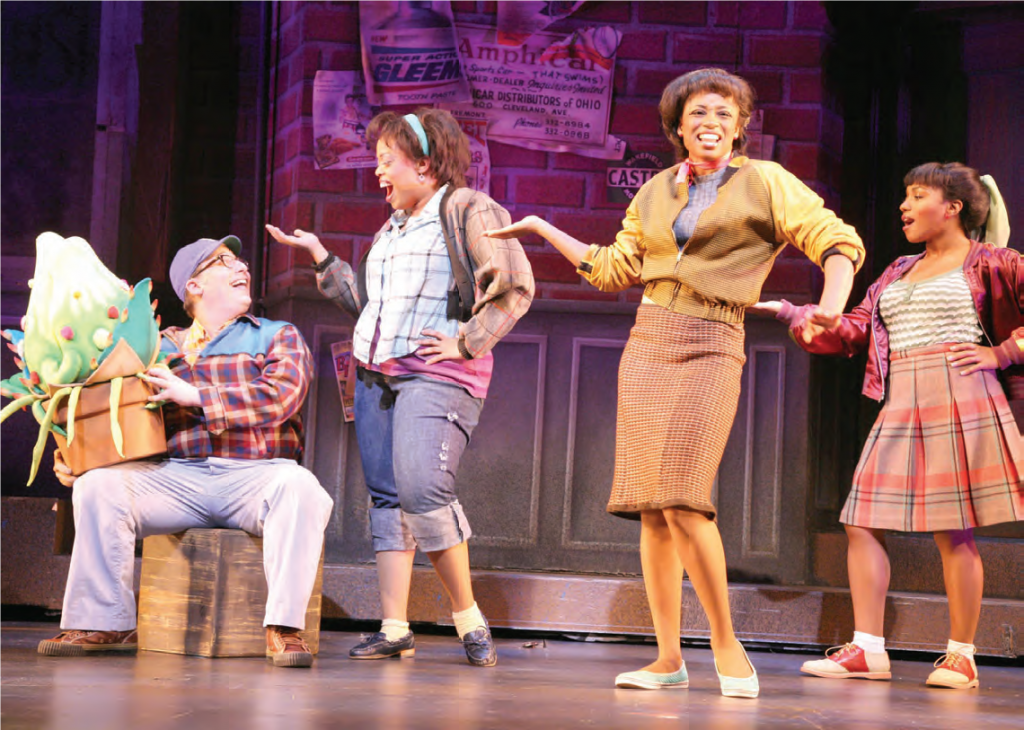
Oh, were it only that simple. Big names may help Paper Mill Playhouse stay afloat, but it’s cultivating the little ones that guarantees a bright future
 Financial Crisis May Force Paper Mill Playhouse To Go Dark. That was a headline from April 2007—not 2008 or 2009. Perhaps the timing was a blessing. Had New Jersey’s state theater run aground amidst of the current financial crisis, it might have gone the way of Lehman Brothers. Instead, a few weeks later, thanks to $300,000 in donations, audiences were treated to a rousing production of Seven Brides for Seven Brothers. Next, the Township of Millburn stepped in and purchased its Brookside Drive land and buildings for $9 million, then leased them back to Paper Mill for 75 years as a hands-off landlord. Present crisis averted, the folks that run PMP began thinking about the future. The buzz words they use are Inter-generational Programming. “Productions specifically designed to broaden our audience appeal to a younger group,” explains Shayne Miller, Director of Press and Public Relations. “By providing ‘family favorite programming’ in our mix—for example High School Musical and Peter Pan—we may attract first-timers to the theater as parents taking their children.
Financial Crisis May Force Paper Mill Playhouse To Go Dark. That was a headline from April 2007—not 2008 or 2009. Perhaps the timing was a blessing. Had New Jersey’s state theater run aground amidst of the current financial crisis, it might have gone the way of Lehman Brothers. Instead, a few weeks later, thanks to $300,000 in donations, audiences were treated to a rousing production of Seven Brides for Seven Brothers. Next, the Township of Millburn stepped in and purchased its Brookside Drive land and buildings for $9 million, then leased them back to Paper Mill for 75 years as a hands-off landlord. Present crisis averted, the folks that run PMP began thinking about the future. The buzz words they use are Inter-generational Programming. “Productions specifically designed to broaden our audience appeal to a younger group,” explains Shayne Miller, Director of Press and Public Relations. “By providing ‘family favorite programming’ in our mix—for example High School Musical and Peter Pan—we may attract first-timers to the theater as parents taking their children.
These parents are likely to be in the important age group of 35 to 55. Once at the theater, we have the opportunity to convert these parents to return, as a couple, to additional shows in our season that may be more adult-focused. We can then target them via direct-response efforts.” Those efforts include trumpeting the big names that have graced the PMP stage since it began operating some 75 years ago. Lynn Redgrave (top left), Ann Hathaway, Patrick Swayze, Bernadette Peters, Liza Minnelli, Chita Rivera, Carol Channing, Betty Buckley, Ann Miller, Estelle Parsons, Edward Villella and Nick Jonas (yes, that Nick Jonas) are among the luminaries whose credits include Paper Mill appearances. This past fall, Paper Mill 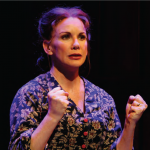 Playhouse presented Laura Ingalls Wilder’s Little House on the Prairie as a musical. It starred Melissa Gilbert (middle left), who played Laura in the famed television series from the age of 9 to the age of 20. In this production, the 45-year-old Gilbert—who recently served two terms as president of the Screen Actors Guild—was cast as Ma.
Playhouse presented Laura Ingalls Wilder’s Little House on the Prairie as a musical. It starred Melissa Gilbert (middle left), who played Laura in the famed television series from the age of 9 to the age of 20. In this production, the 45-year-old Gilbert—who recently served two terms as president of the Screen Actors Guild—was cast as Ma.
Another noteworthy notch in PMP’s belt. “We will also look for shows with broad inter-generational appeal, like 1776 (bottom left),” adds Miller, “which was appealing to seniors, parents, school groups and children. Our Children’s Theater and Education programs can also serve as an entry point to the theater.” For Artistic Director Mark Hoebee and Executive Mark Jones (left), reaching out to young audiences is more than just a marketing strategy. He sees the theater’s playing an important part in the Garden State’s education picture. “We need to have the arts in our children’s live as they are being educated,” says Jones. “Our role, within that, and in the state of New Jersey, is to have a statewide Theater Education program.
It doesn’t just bus kids in to see one of our mainstage productions, but actually works in the schools proactively, runs a healthy theater school with five hundred people enrolled— which we have—and runs one of the best summer conservatories in America. The Paper Mill’s ‘Rising Star Award’ program, which encompasses all twenty-one counties in the state, is very popular.” Whatever the future holds for Paper Mill, and the arts in general, some things will never change. “We’re unique,” says Jones, “because we have original productions of musical theater classics, as well as new works. Here at Paper Mill, we put our stamp on everything we create.”
All photos courtesy of Paper Mill Playhouse: Little Shop of Horrors, Lynn Redgrave/The Importance of Being Earnest, Kiss Me, Kate and Oklahoma!: Gerry Goodstein; Melissa Gilbert/Little House on the Prairie, The Musical: Jerry Dalia; 1776: Kevin Sprague.

Don’t say anything about New Jersey around BRIAN WILLIAMS unless you have something good to say. The Garden State was a springboard into a news career that has seen him defy the odds and reach the pinnacle of his profession. When Williams has to dig deep for strength or  inspiration, New Jersey serves as his touchstone. The instant he motors past that center stripe in the Lincoln Tunnel, he feels he is home again. In his chat with the NBC Nightly News anchor, EDGE editor MARK STEWART discovers that what you see (and hear) is what you get. Whether getting a story right, hosting Saturday Night Live, or putting his money where his heart is, Williams is as authentic as they come.
inspiration, New Jersey serves as his touchstone. The instant he motors past that center stripe in the Lincoln Tunnel, he feels he is home again. In his chat with the NBC Nightly News anchor, EDGE editor MARK STEWART discovers that what you see (and hear) is what you get. Whether getting a story right, hosting Saturday Night Live, or putting his money where his heart is, Williams is as authentic as they come.
EDGE: To reach the level you have in the business, an anchor must find the perfect balance between being a newsman and a performer. How did you find that balance?
BW: I’ve never had a lesson in performance. I’ve never had anybody tell me how. I have had great role models, from watching Cronkite every evening of my young life—I lived in a household where dinner would not be served until he said, ‘That’s the way it is’—to working beside Dan Rather at CBS and, more importantly, being taken under the wing of Tom Brokaw at NBC. He made sure I was in the right spot at every point. When it was time to be chief White House correspondent, he made it clear to me that it was time to be chief White House correspondent, and I moved down to Washington with my family. So at every point I’ve been so fortunate either to have watched a great example or worked next to one, and be mentored by one.
EDGE: Cronkite was your idol.
BW: He was my absolute, North Star idol. Walter Cronkite was the guy I always wanted to be, and he lived long enough for me to make that very clear to him. That was one of the great moments of my career.
EDGE: You started your climb in Middletown, New Jersey. How did you work your way to the top?
BW: I didn’t have any contacts. I had no way in through the front door or the back. So climbing in the window of the television news business and coming up through the basement is the only way I know how to get ahead. That meant moving out to Kansas, learning the business, and being willing to crawl through broken glass to get ahead. If you have your eyes on a prize in this country, there’s nothing that can stop you—I’m a living example of that. I am not college educated, I did not grow up with honed skills or a family that knew what a prep school was. I didn’t know what the Ivy League was when I was in high school. It just wasn’t in my ken. But if you’re a hustler—and I’ve never regarded that as a pejorative, that word’s a positive in my book—the world is your oyster.
EDGE: At what point did you become comfortable being Brian Williams?
BW: I’ve thought about it a lot. Various local stations in my twenties on my way up made vain attempts to put me with consultants. I had to sit through a focus group once and listen to what they said about me. That is not for the faint of heart, and something I don’t recommend to people. But after a while, as I came up through the industry, I thought Well, this must be working. I have no choice but to be who I am. I went with who ‘brung me to the dance.’ Even so, my daughter will tell you the Brian Williams on Nightly News is not the Dad she knows. She knows someone else entirely. She will tell you that the Brian Williams of Saturday Night Live or Jon Stewart or Conan is much closer to the guy she knows.
EDGE: How did the SNL hosting gig develop? Who pursued whom?
BW: I was pursued. Lorne Michaels had made noises about it for years, actually. Lorne, sadly, has to sit through a lot of dinners and charity events that I emcee, and I tend to mix it up during those because they can be as dry as dirt. Finally he came to me and said, ‘This is a serious offer’ and gave me an airdate. I told him I had 26 years of a career to worry about and I knew I could easily dispose of it in 90 minutes. I asked everyone in my life—I asked not just Tom Brokaw, but also his wife Meredith. Jane and I talked about it for hours. I wanted to be sure that I wasn’t flushing what credibility I had down the toilet.
EDGE: I recall saying to my wife when you were announced that this was the bravest hosting decision in the history of the show.
BW: When I wrote the monologue, the first thing I said was, ‘I know what you’re thinking…is this really a good idea?’ That was actually my favorite moment in the show, because it was the elephant in the studio.
EDGE: So what made you say Yes?
BW: I had never met Chevy Chase and I saw him outside SNL in the hallway talking to a friend of mine. I went up to him, introduced myself, and asked him what he thought I should do. I explained that I owed Lorne a decision tomorrow. He said, ‘I watched Dan Rather for years and I never got any closer to knowing who he is. I think if you do this, I might get to know who you are.’ And that was the clinching vote. I called Lorne and accepted. I had to reject about fifty percent of the sketch ideas the writers proposed. Their job, of course, is to make a total horse’s ass out of the host.
EDGE: The skit I remember is the one where you played a firefighter. It was a totally authentic performance. Where did that come from?
BW: Sharp-eyed viewers will notice that the helmet on my lap said OVFC #11 and Williams. That stands for Old Village Fire Company, Engine 11, in Middletown Township. That was my gear. As a firefighter years ago, on a volunteer basis in Jersey—who still hangs around New York City firefighters— that was the easiest ‘character’ I could have done. I knew the lingo already, so it was easy.
EDGE: There’s still a lot of Jersey in you, isn’t there?
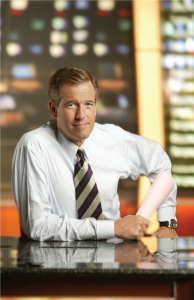 BW: When I pass into New Jersey there’s something that happens to me at mid-span on the GW Bridge and midway through the Lincoln Tunnel. I call it my ‘power corridor’. I feel most at home there. I speak New Jersey. New Jerseyans are real. It’s the most densely populated state in the union and yet I can tell from your accent if you’re from South Jersey or North Jersey. I can usually tell if you’re from the Mid Shore. We have a lot of different regions, and yet I think there’s a baked-in pride. We have to put up with a lot of crap. I don’t take kindly to a lot of Jersey jokes because I know a lot about my state. Way too many people judge our state based on one stretch of highway on the Turnpike along refinery row. And that’s unfortunate. I think if we had it to do over again, we wouldn’t route so many millions of motorists right past the most heavily industrialized region of the East Coast.
BW: When I pass into New Jersey there’s something that happens to me at mid-span on the GW Bridge and midway through the Lincoln Tunnel. I call it my ‘power corridor’. I feel most at home there. I speak New Jersey. New Jerseyans are real. It’s the most densely populated state in the union and yet I can tell from your accent if you’re from South Jersey or North Jersey. I can usually tell if you’re from the Mid Shore. We have a lot of different regions, and yet I think there’s a baked-in pride. We have to put up with a lot of crap. I don’t take kindly to a lot of Jersey jokes because I know a lot about my state. Way too many people judge our state based on one stretch of highway on the Turnpike along refinery row. And that’s unfortunate. I think if we had it to do over again, we wouldn’t route so many millions of motorists right past the most heavily industrialized region of the East Coast.
EDGE: So what is it that defines New Jerseyans?
BW: There’s a moxie, there’s a street smartness, there’s a reality to being from New Jersey. New Jerseyans have texture. They have grit. We aren’t always the most earnest members of the jury pool, but we’ll be the jury foreman, and we’ll get you a verdict.
EDGE: What role does grit play in your job?
BW: Grit is what it’s all about! Grit is life experience. It’s having a few layers of paint worn off of you, so you’re not shiny and new. This is not your first rodeo. A little skepticism. Even some cynicism. Grit has served me well in life. I just think grit equals authenticity today. And to make it today, you’ve got to have it.
EDGE: What do you remember when you look back on your New Jersey days?
BW: I had the perfect upbringing; I wouldn’t do it any other way. I get very emotional and gauzy, warm and fuzzy, and romantic about my upbringing—even though at the time it felt ordinary and at times a struggle. There were kids at Mater Dei High School who had a lot more than me, and it wasn’t my proudest moment to look at the back page of the yearbook and see the colleges other kids were headed to. And while I screwed up my education and came within inches of becoming a colossal failure—I interviewed for a police dispatch position out of Freehold thinking that would be a good, steady job—life went in a different direction. But when I go back there now I would like to think I have a flag in that soil that is mine.
EDGE: One of those flags will be in Newark soon, where the Horizons Summer Enrichment Program is opening a new location. You and Jane must get pulled in so many directions, and yet you’ve devoted yourselves to Horizons completely. What is it that you have found so appealing about it?
BW: You know how they say We know you have a choice in airlines and we appreciate you flying with us? My wife and I have been blessed in many ways in life, mostly financially—we never thought we’d have any money—and we have chosen to give most of our charitable dollars to a single cause, because Horizons changes lives in front of your eyes. The children chosen for the program end up in a different life. They are transported, as if by a giant hand, and lifted up. It’s just the most extraordinary program, and it only exists because of the good people who run it. Mr. and Mrs. Williams will only be happy when there is a Horizons-affiliated school in every city, town and hamlet that feels they need one. If people would just go to the web site [horizonsnational.org] and watch the piece we did, it would be the leading school enrichment program in the country. I’ve just never seen a return on the volunteer hour or donated dollar quite as dramatic as Horizons.
EDGE: EDGE readers live and work relatively close to the new location. Tell them why they should volunteer or donate to Horizons?
BW: It’s that feeling you get when you give a gift that’s so great that it gets your endorphins going just to give it away. The feeling you’ve knocked one out of the park. Multiply that by a hundred. Or a hundred thousand. That’s how giving to Horizons will make you feel. Most Americans, in the course of their lives, are lucky if they get to change one or two lives. This is a very easy way to do that on a larger scale, with a tangible, human, smiling result.

